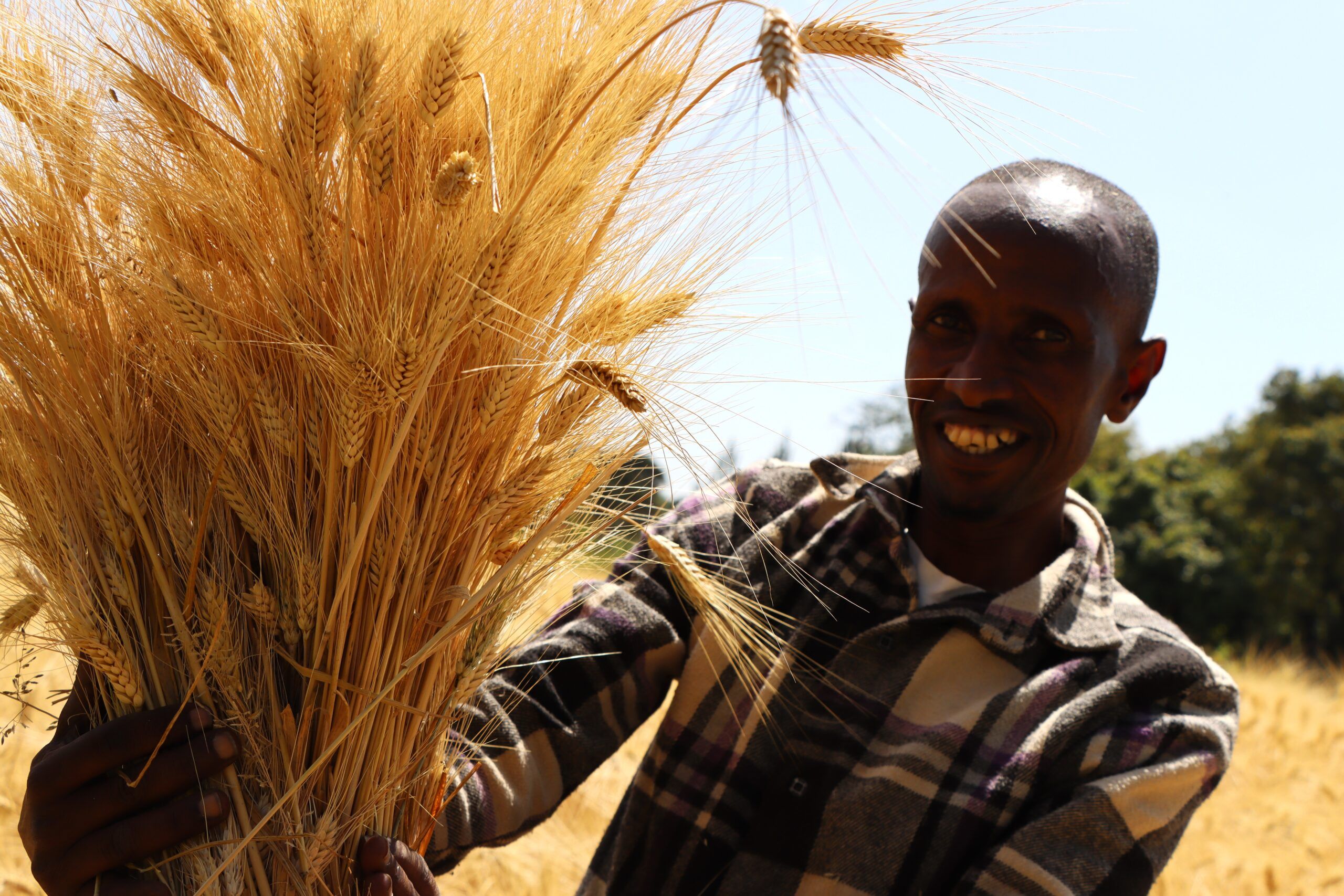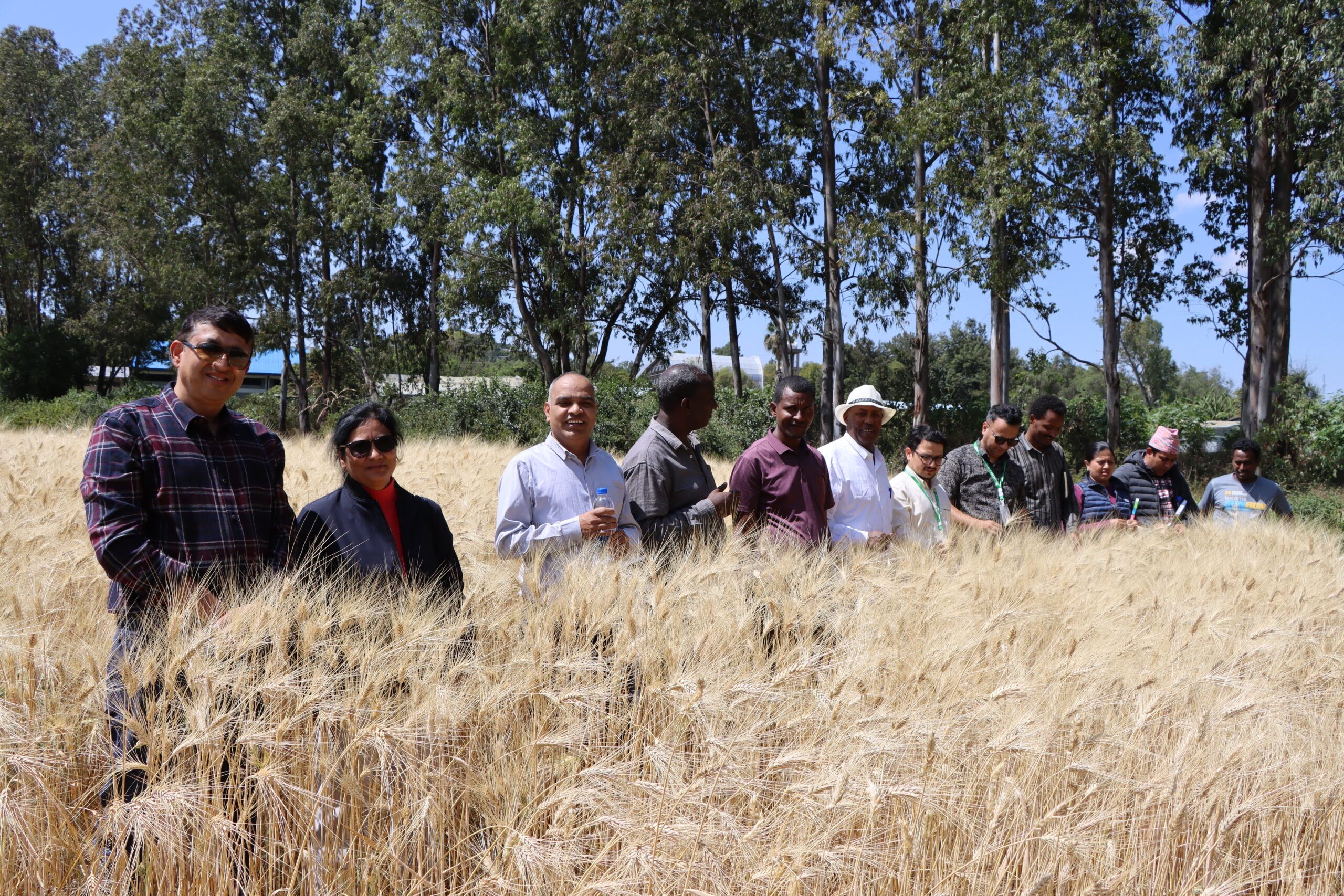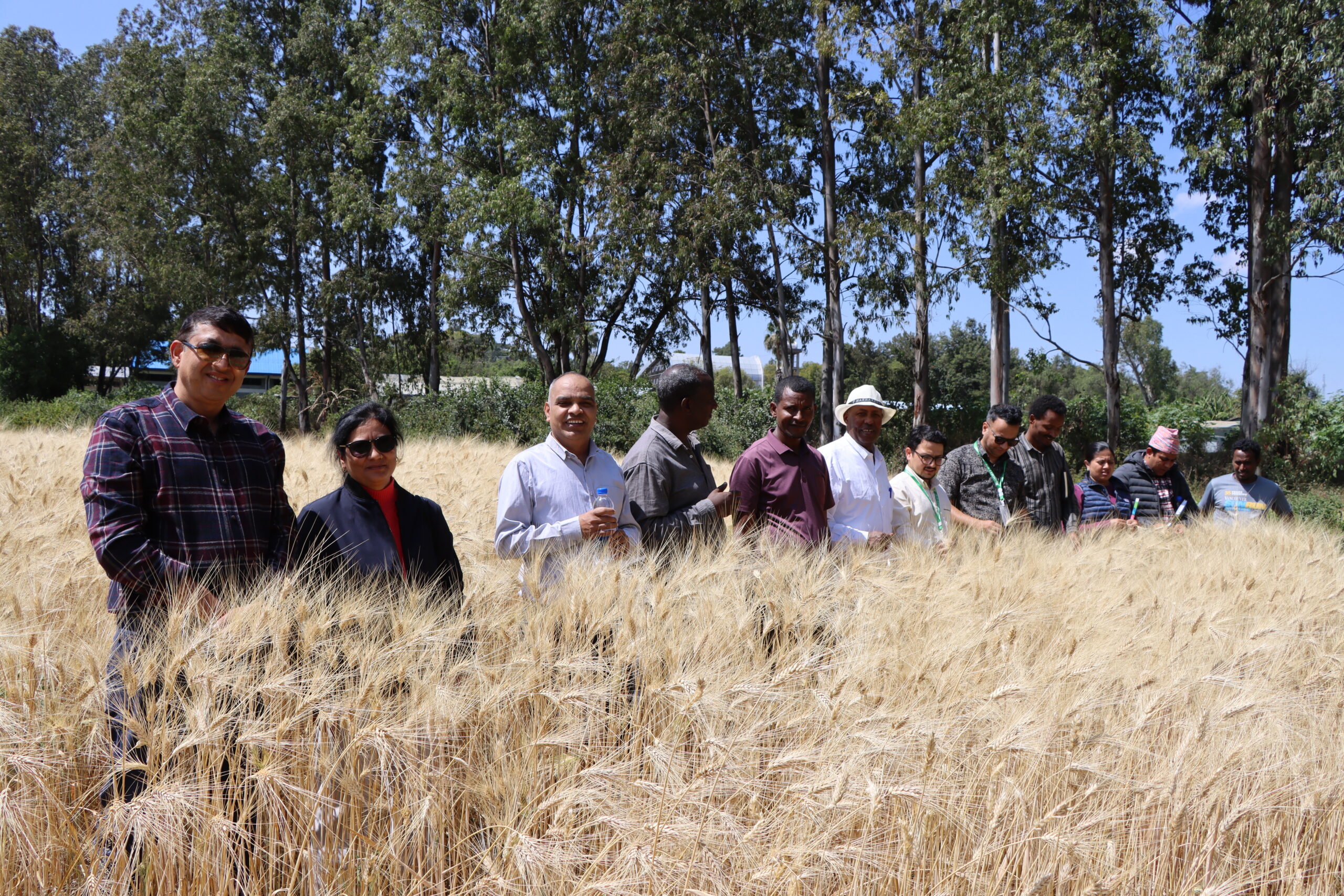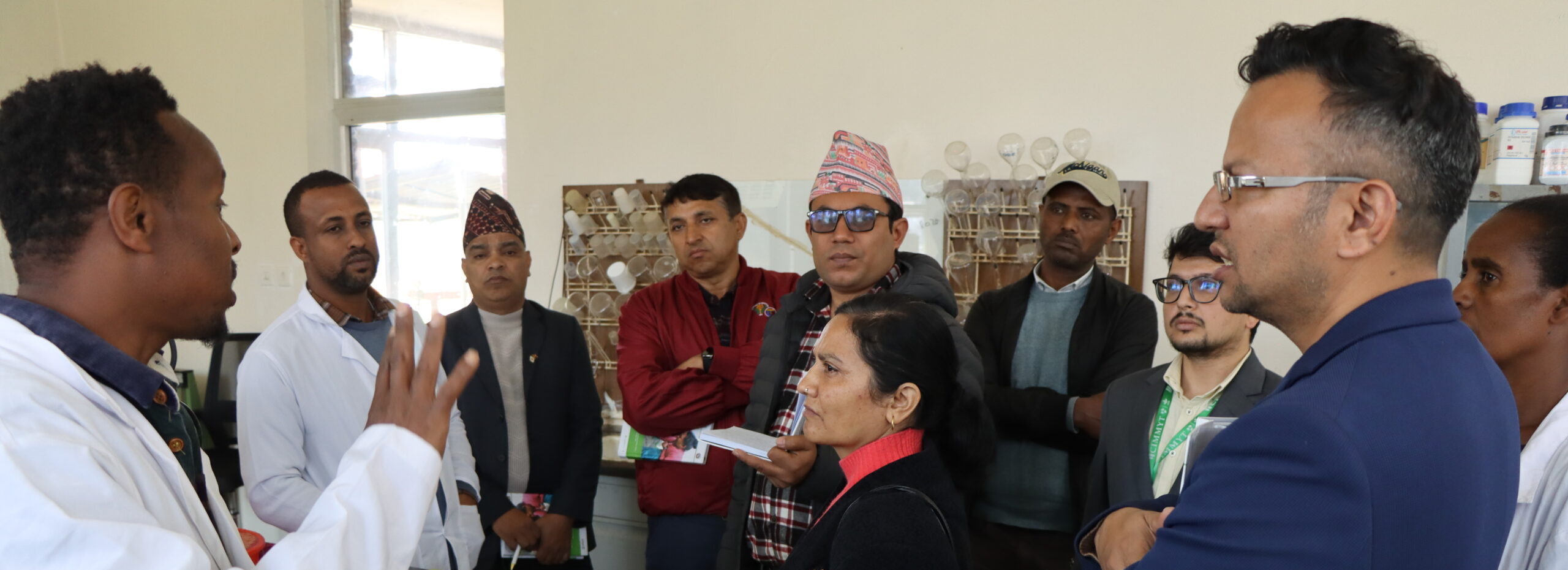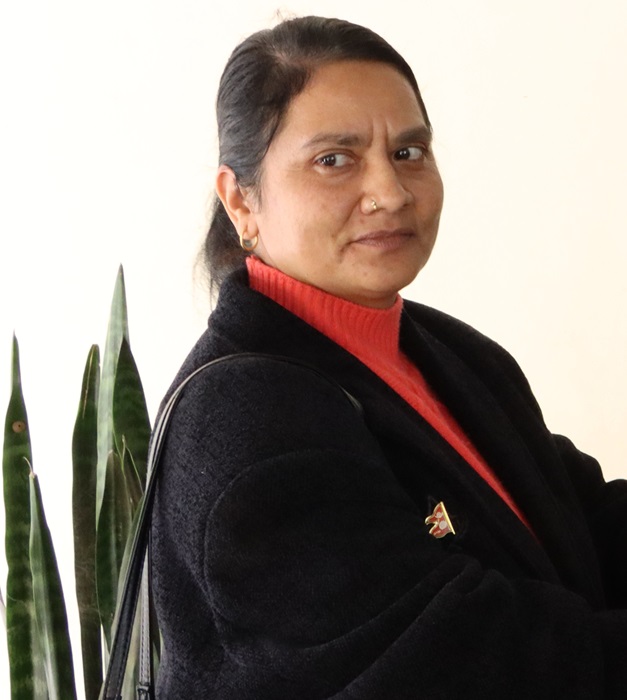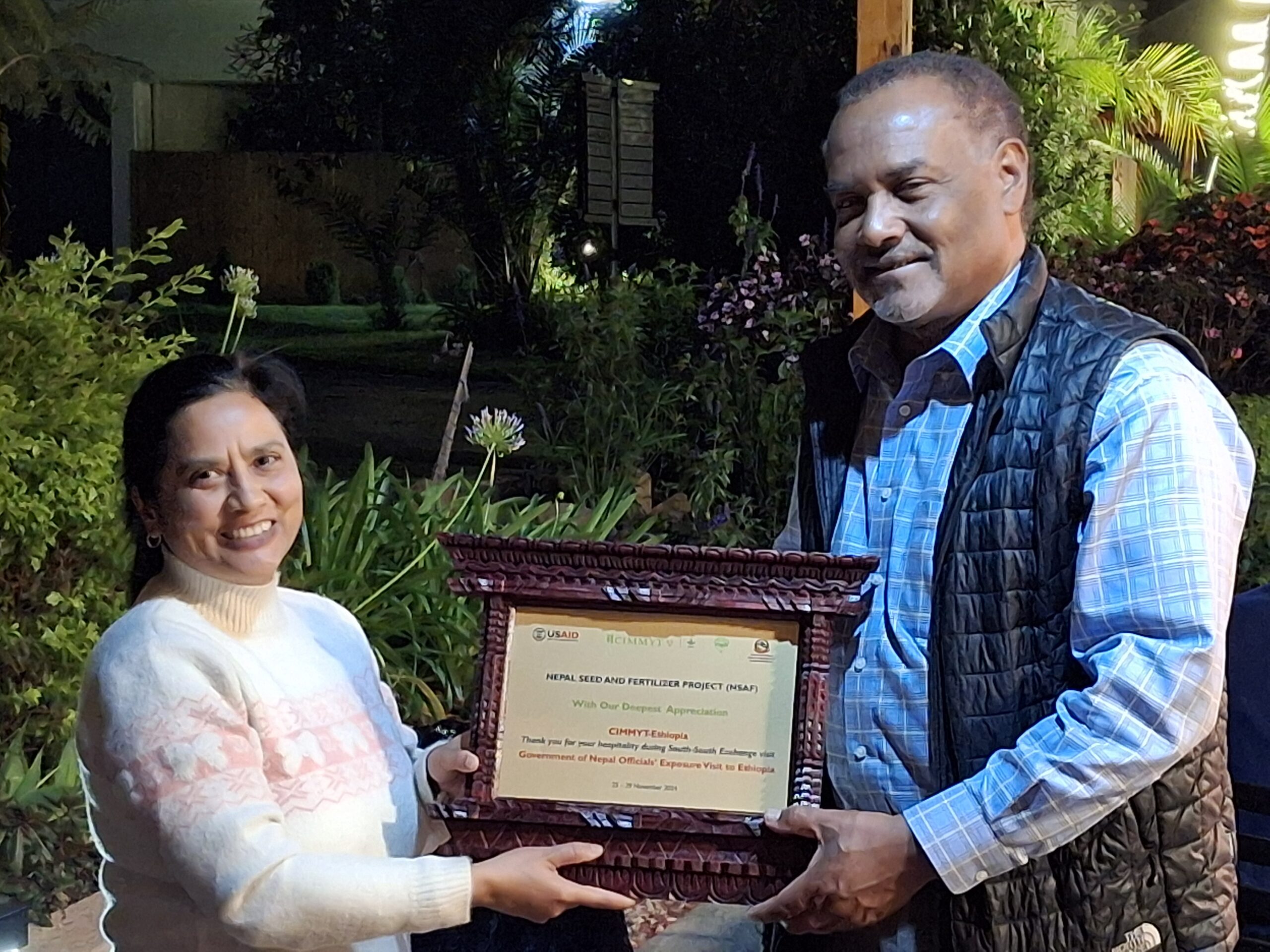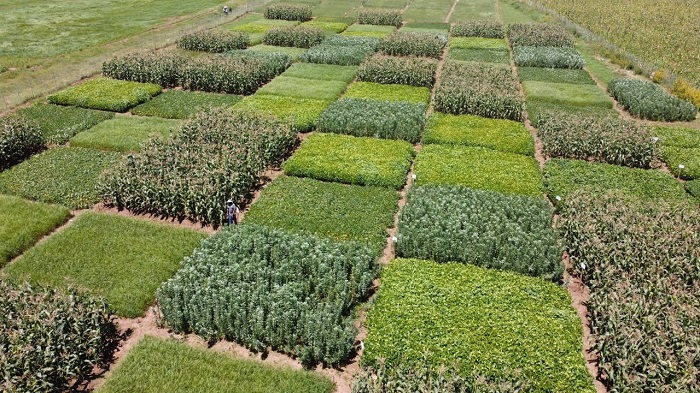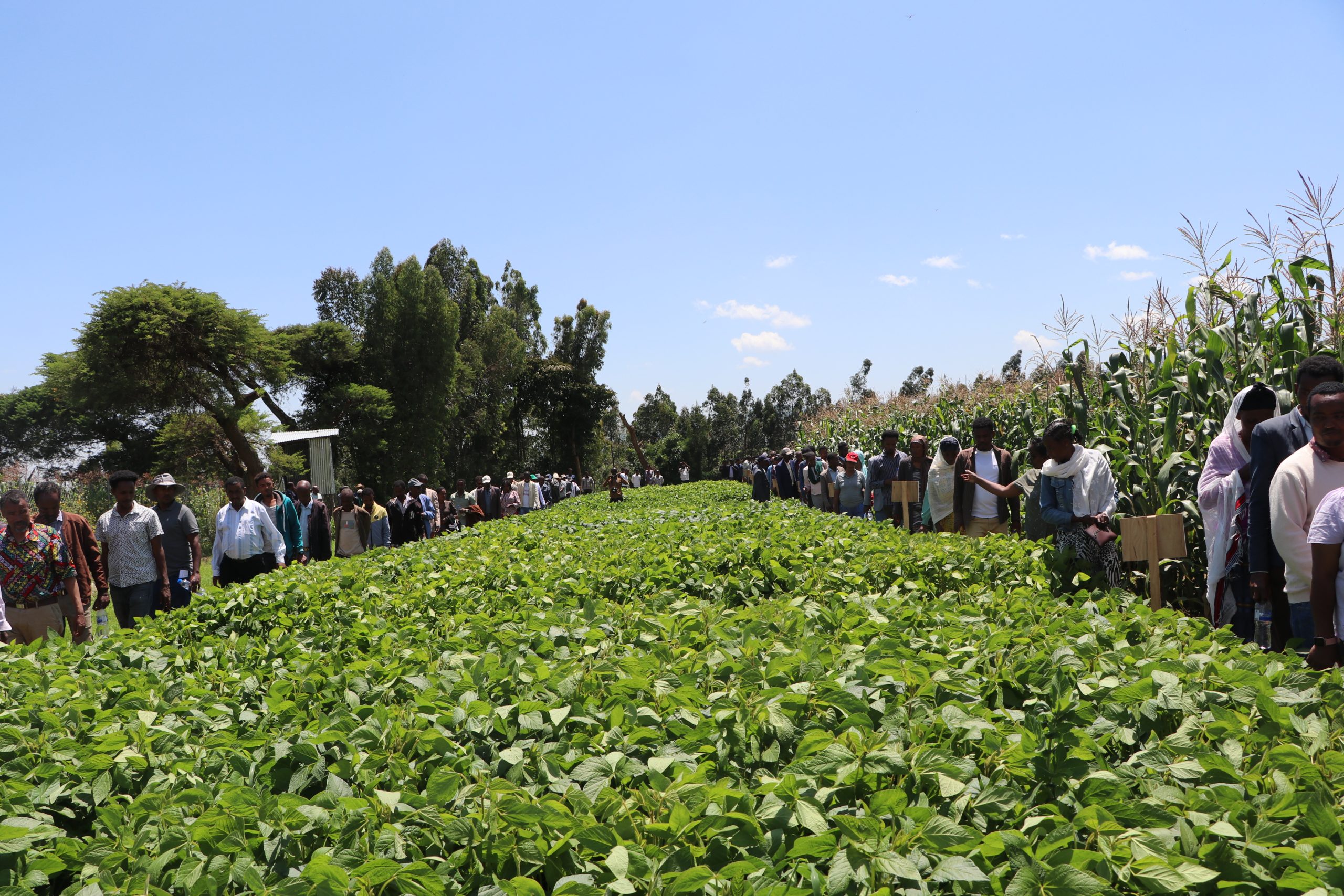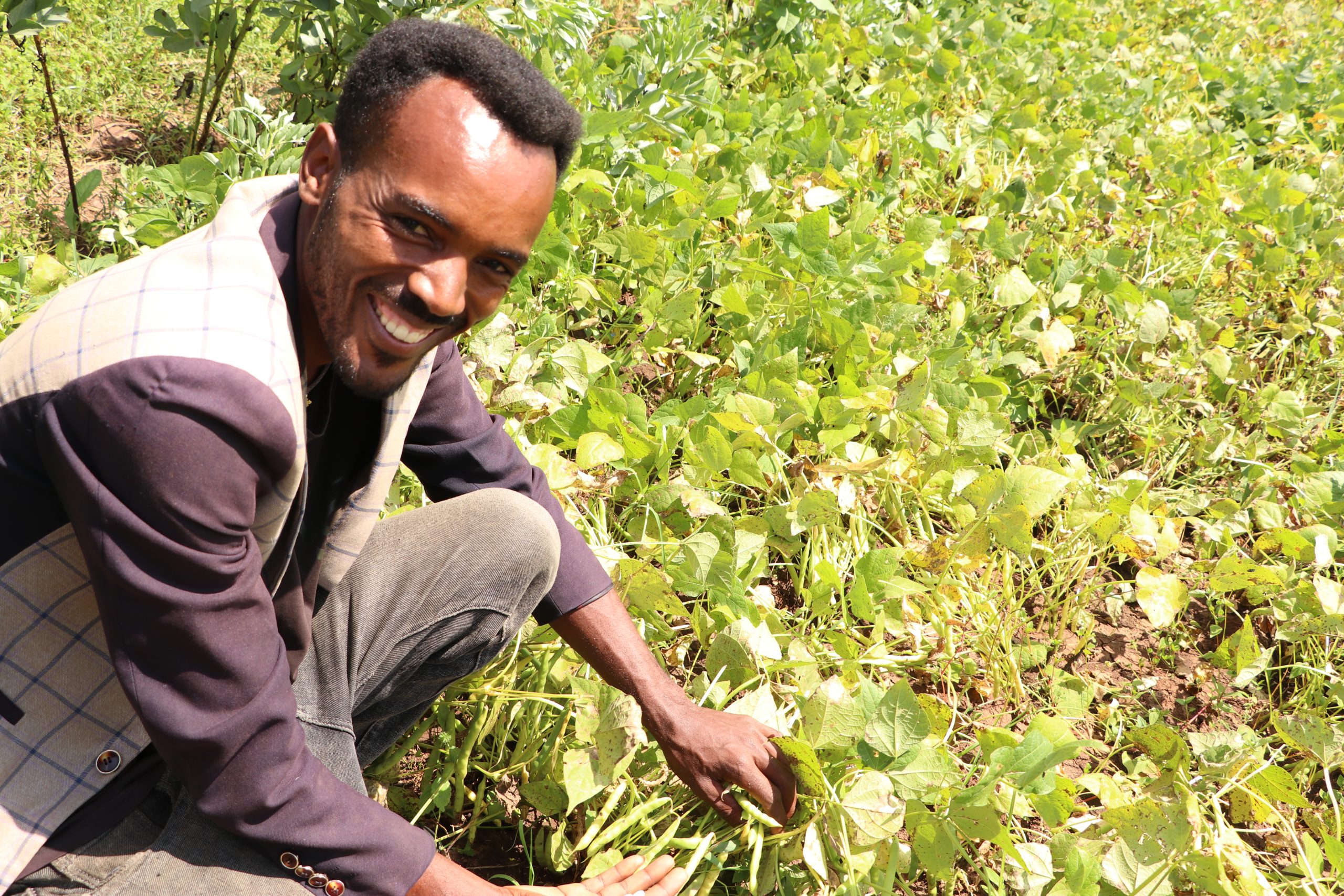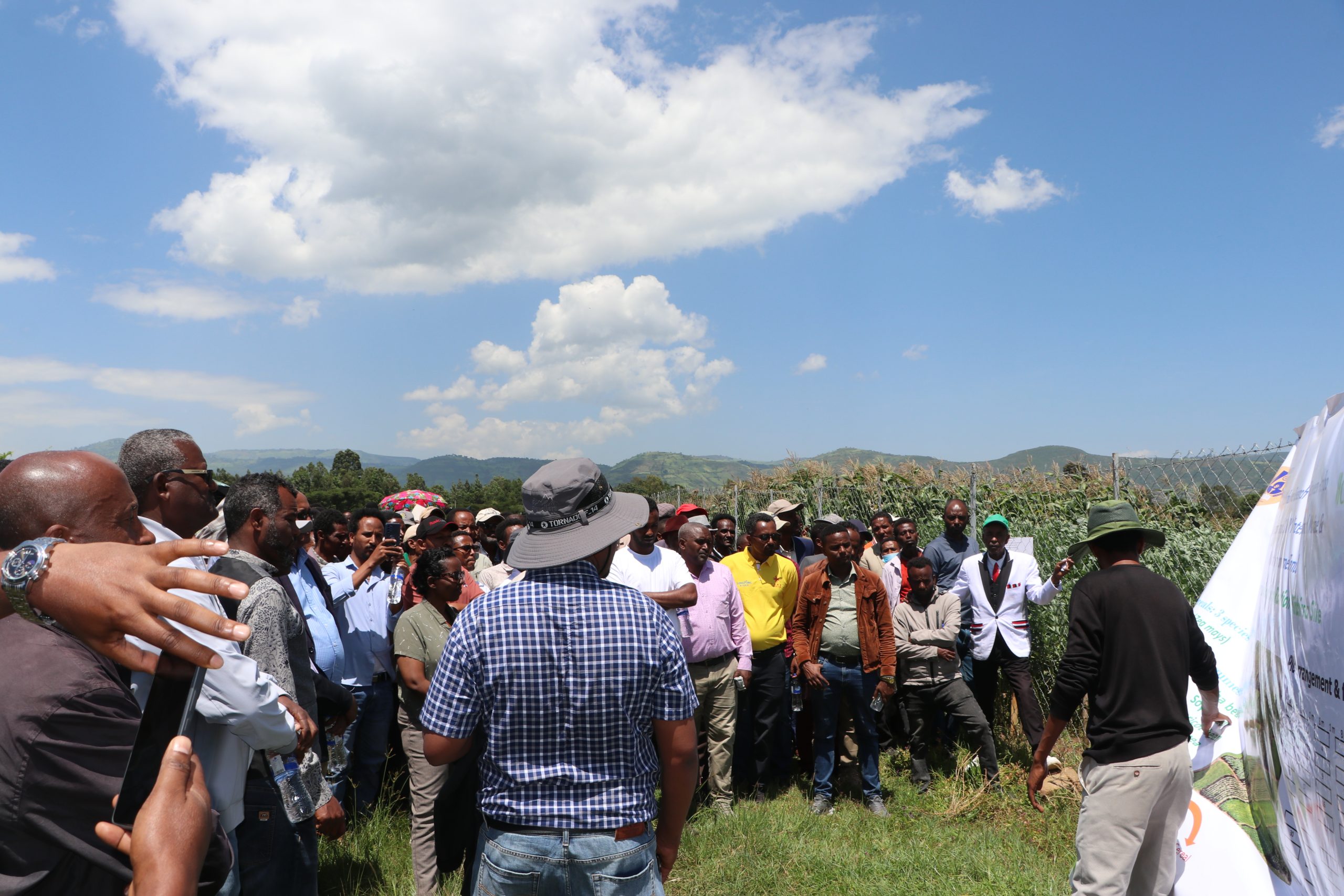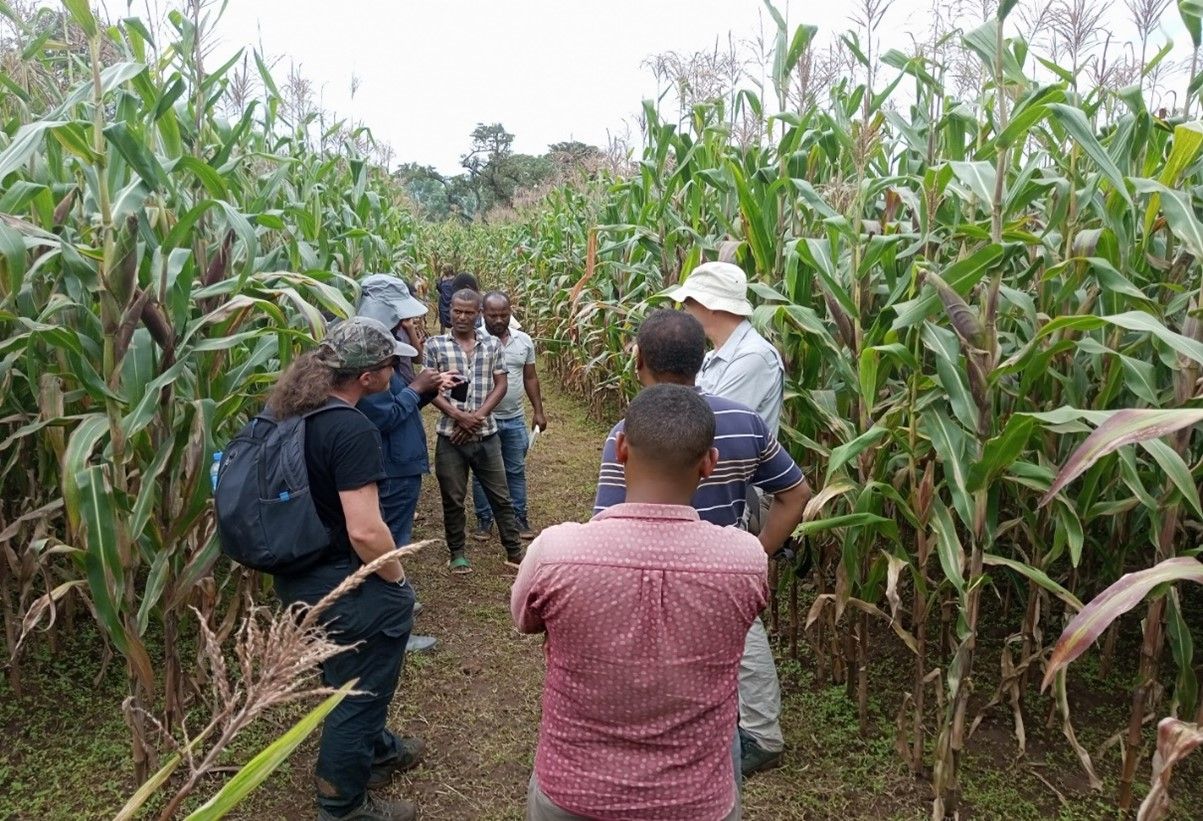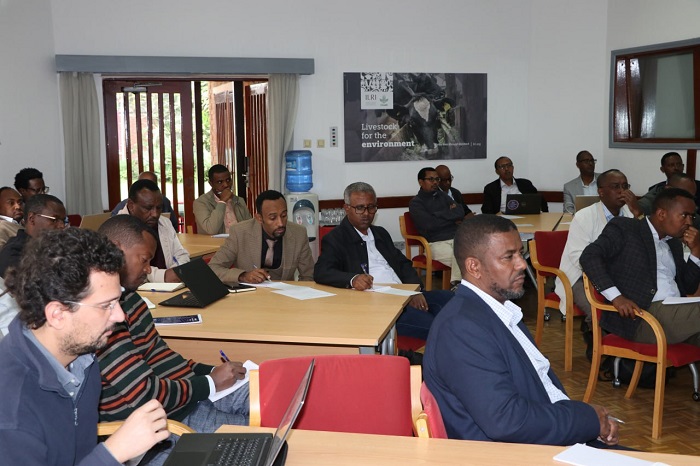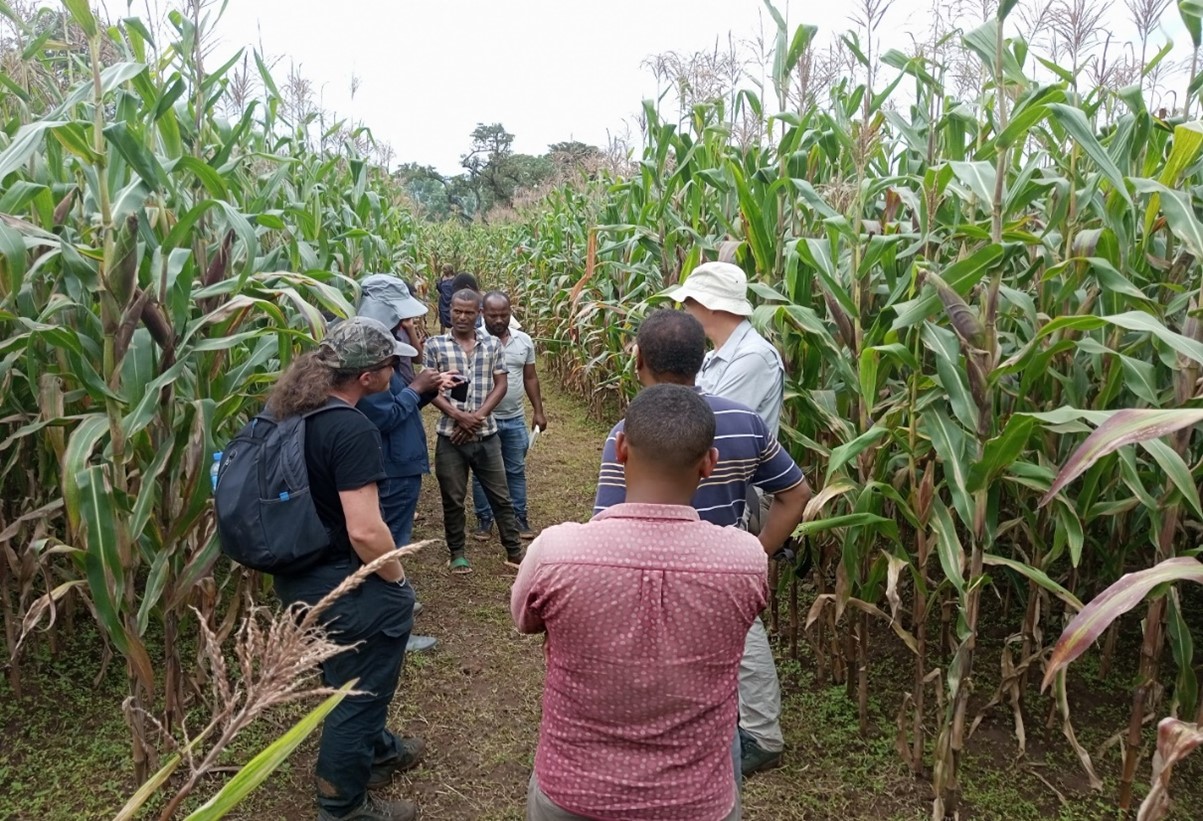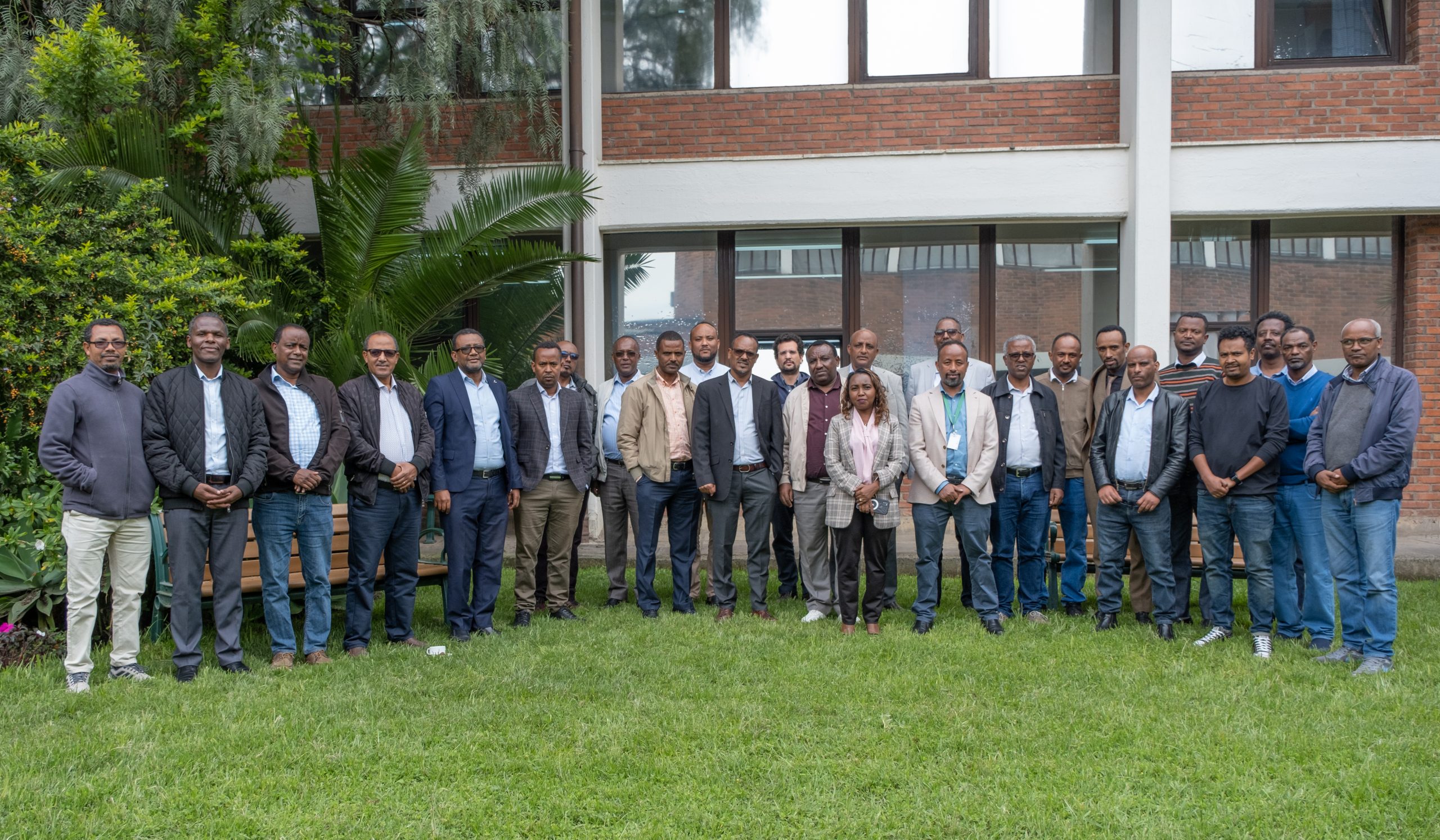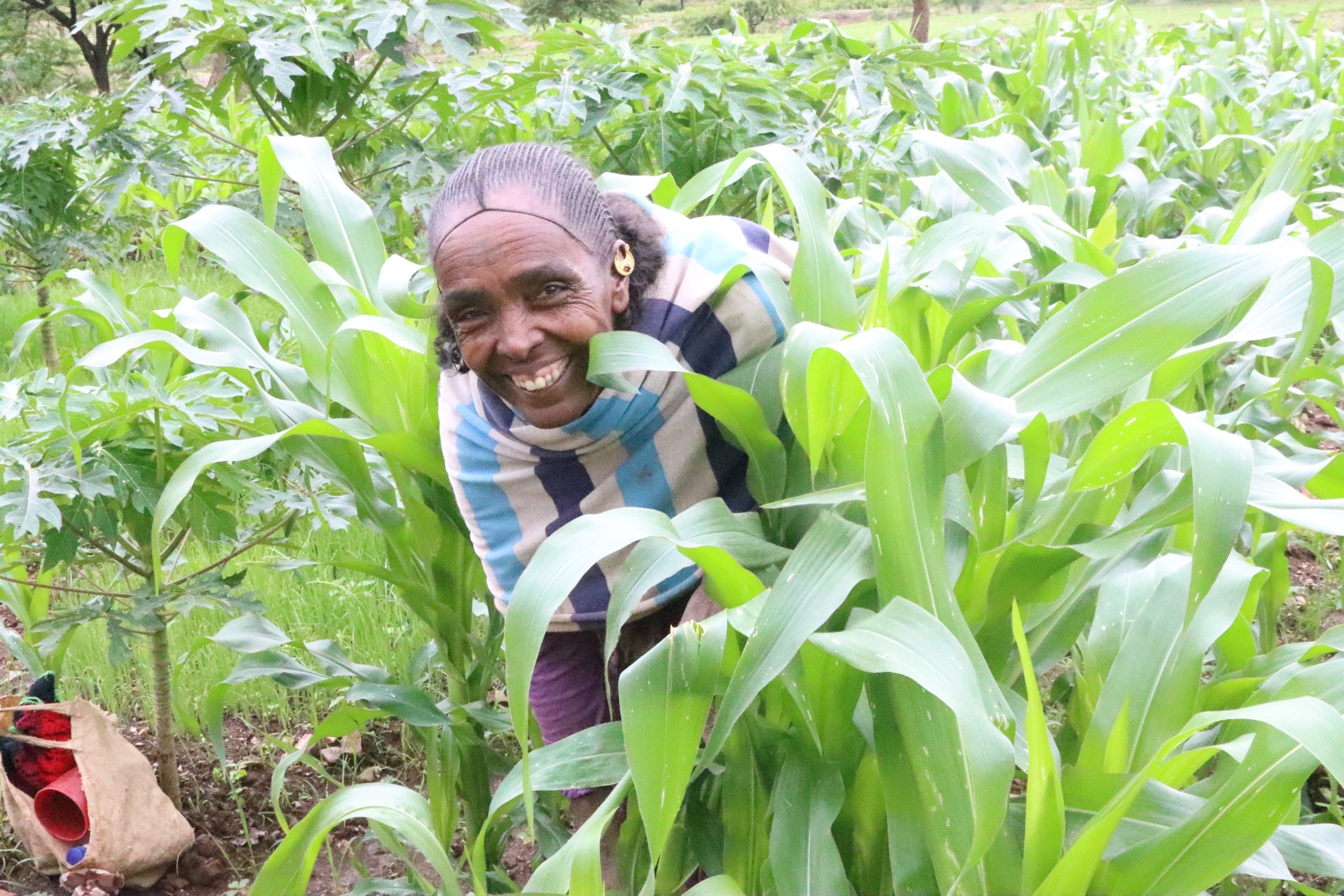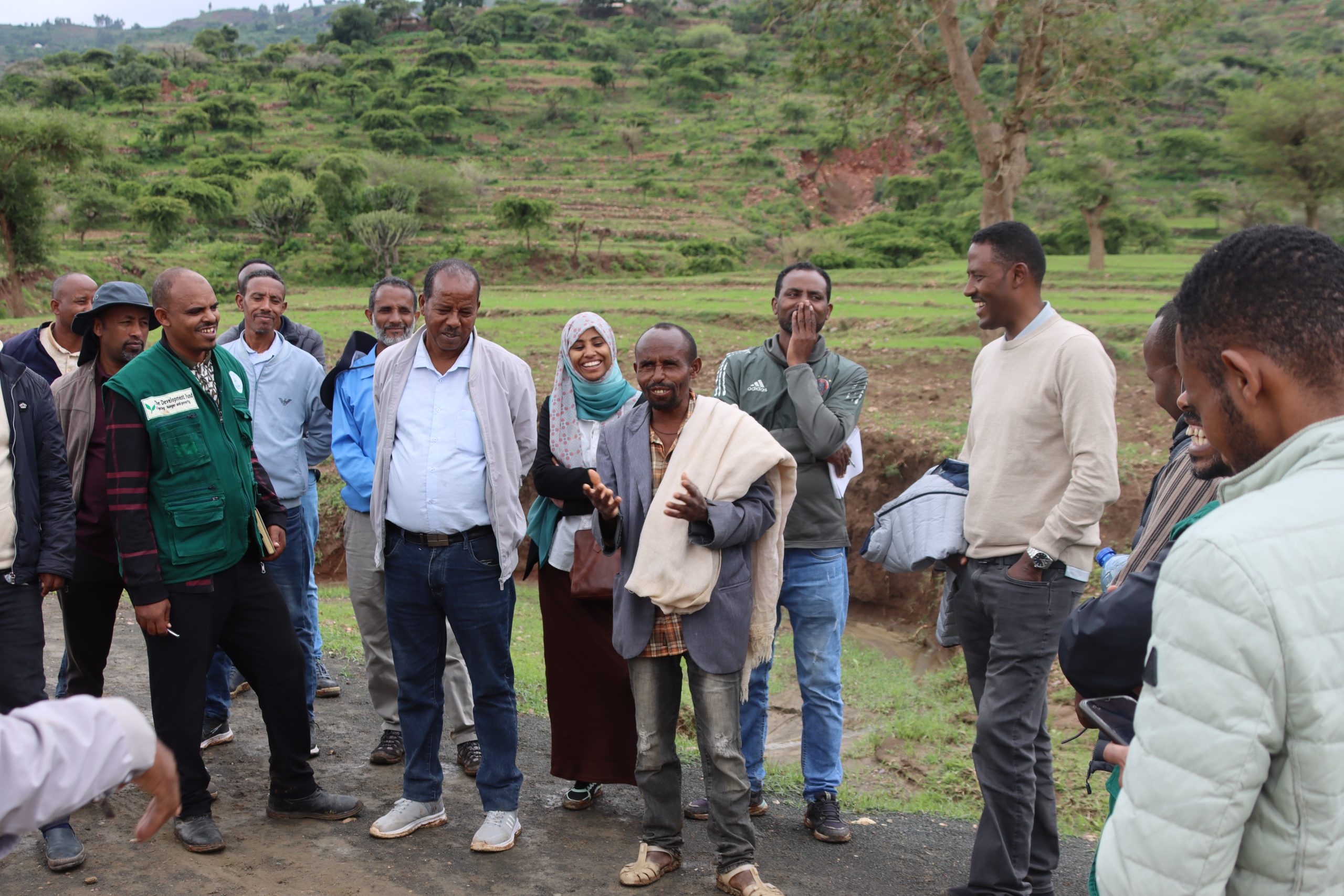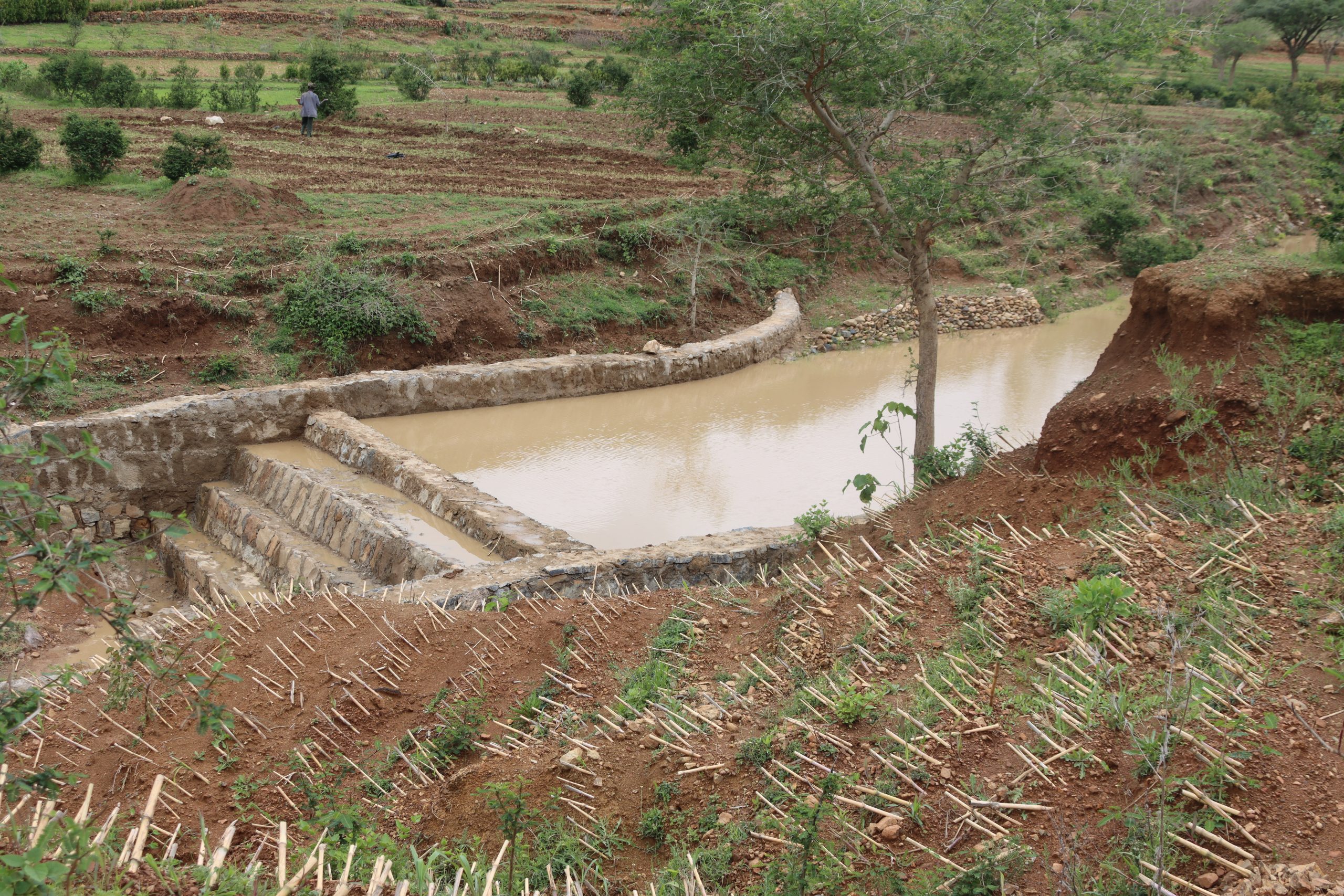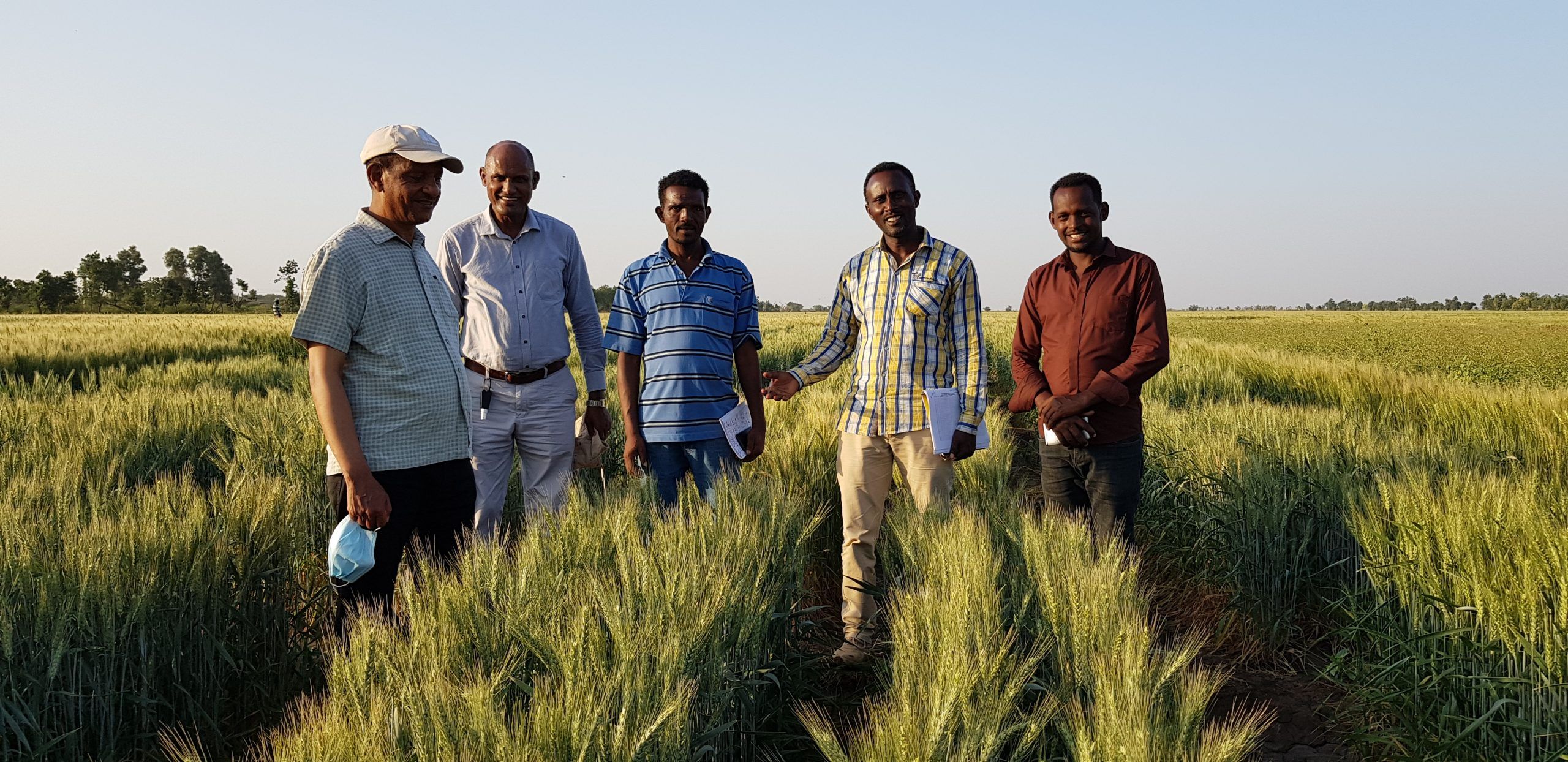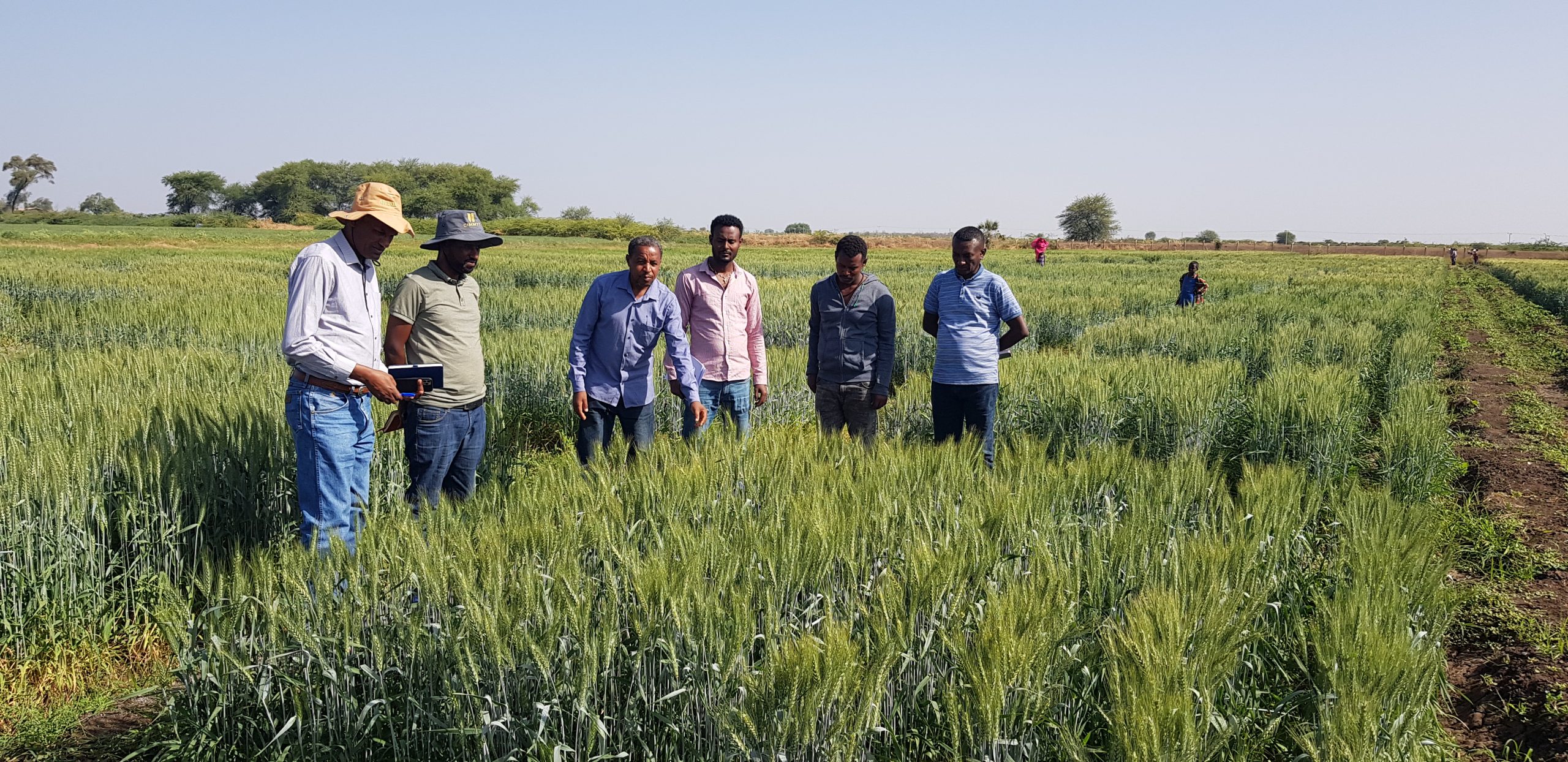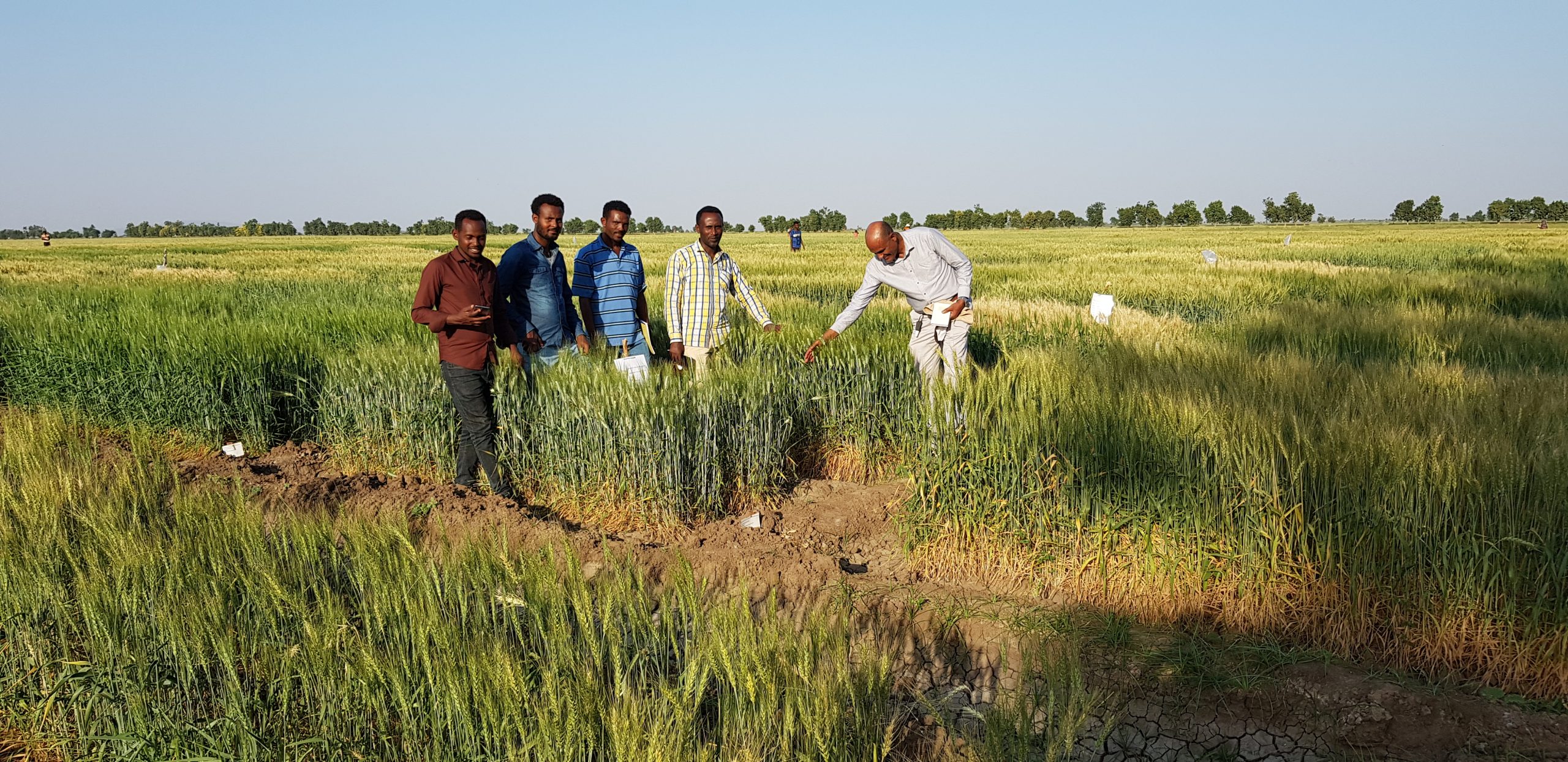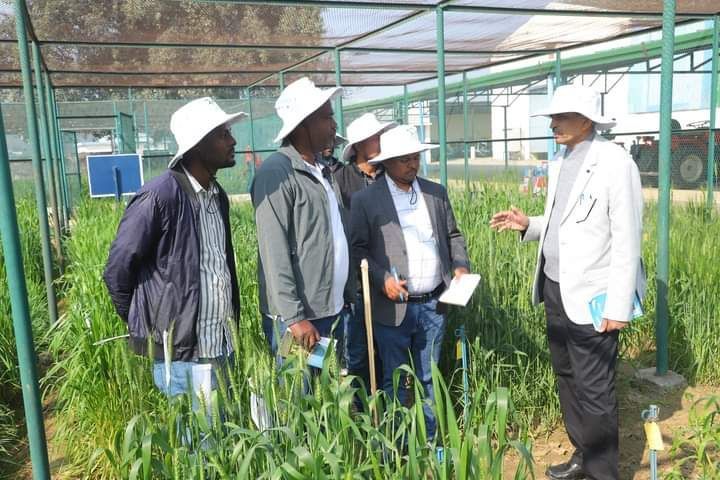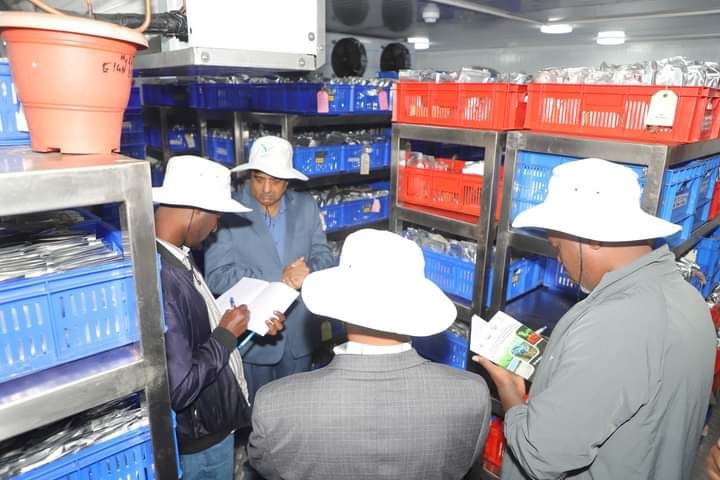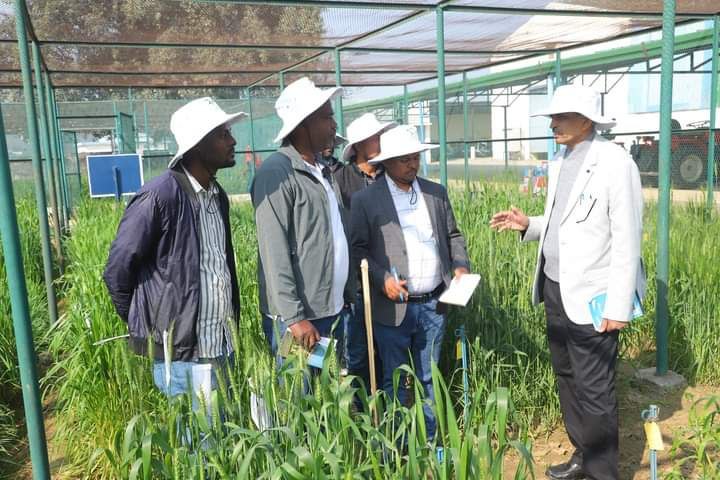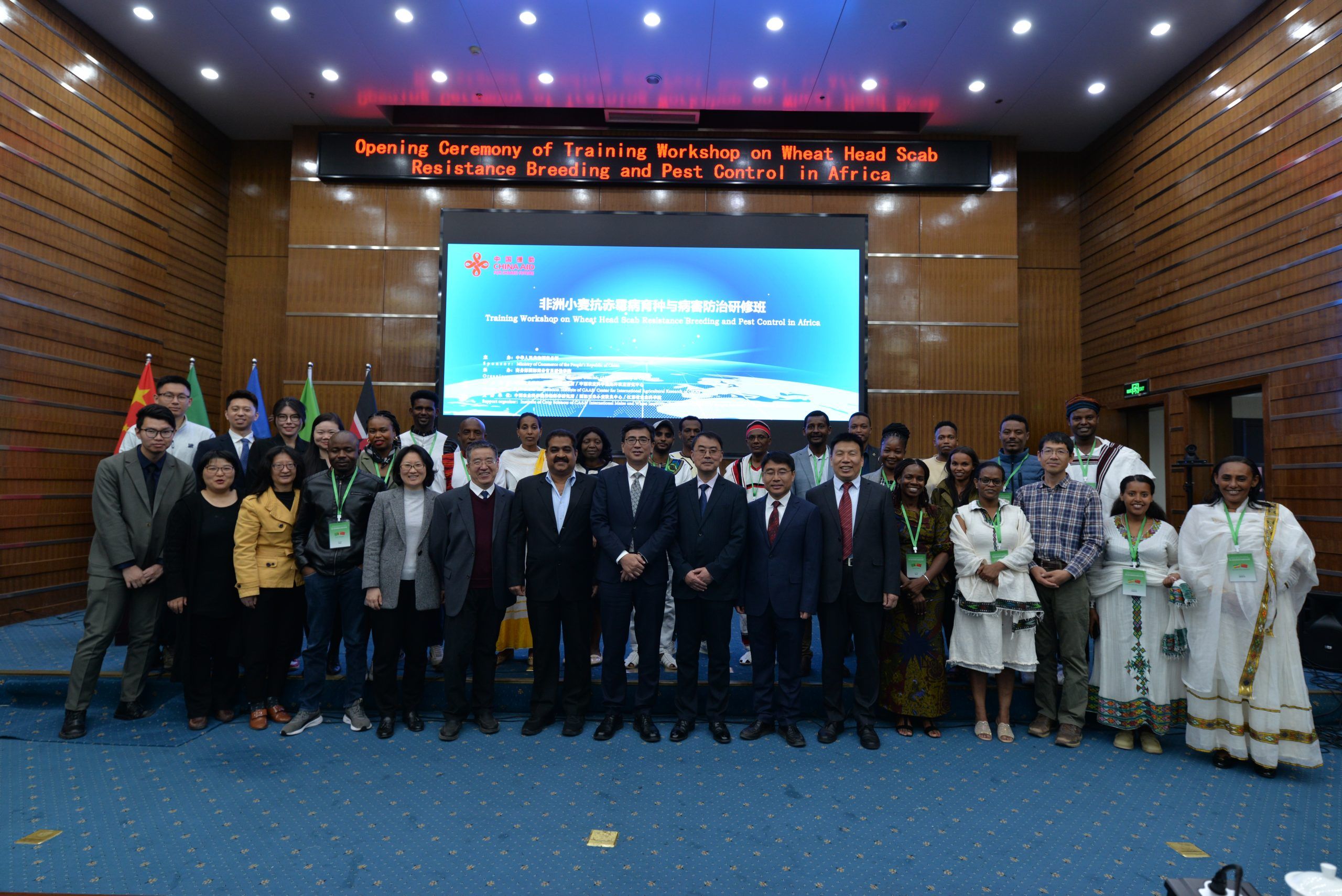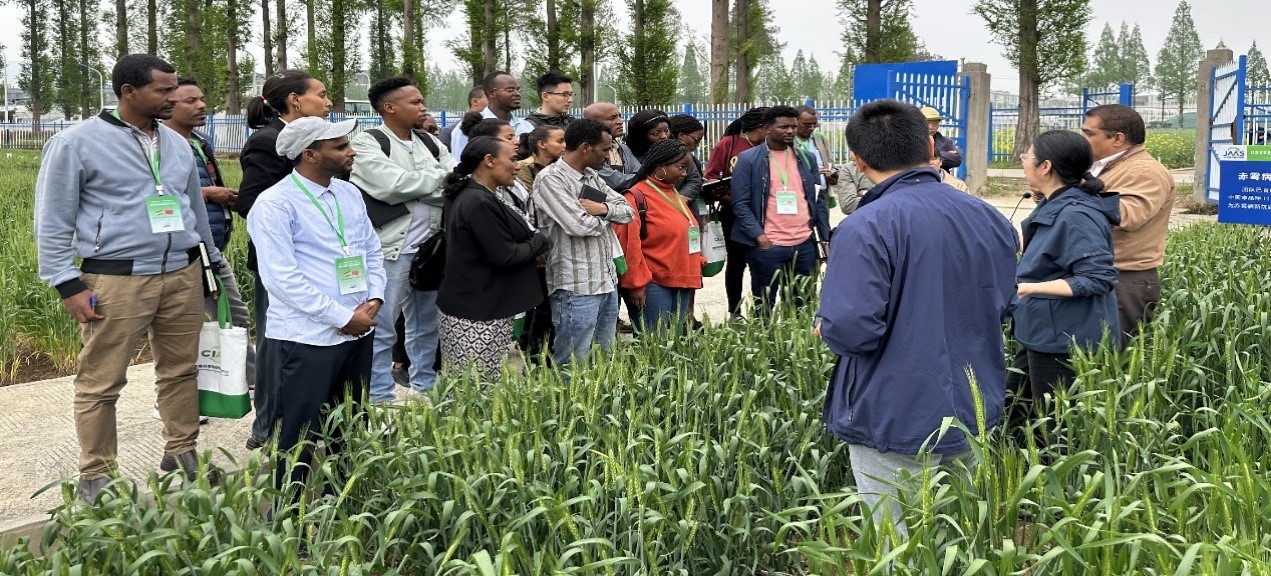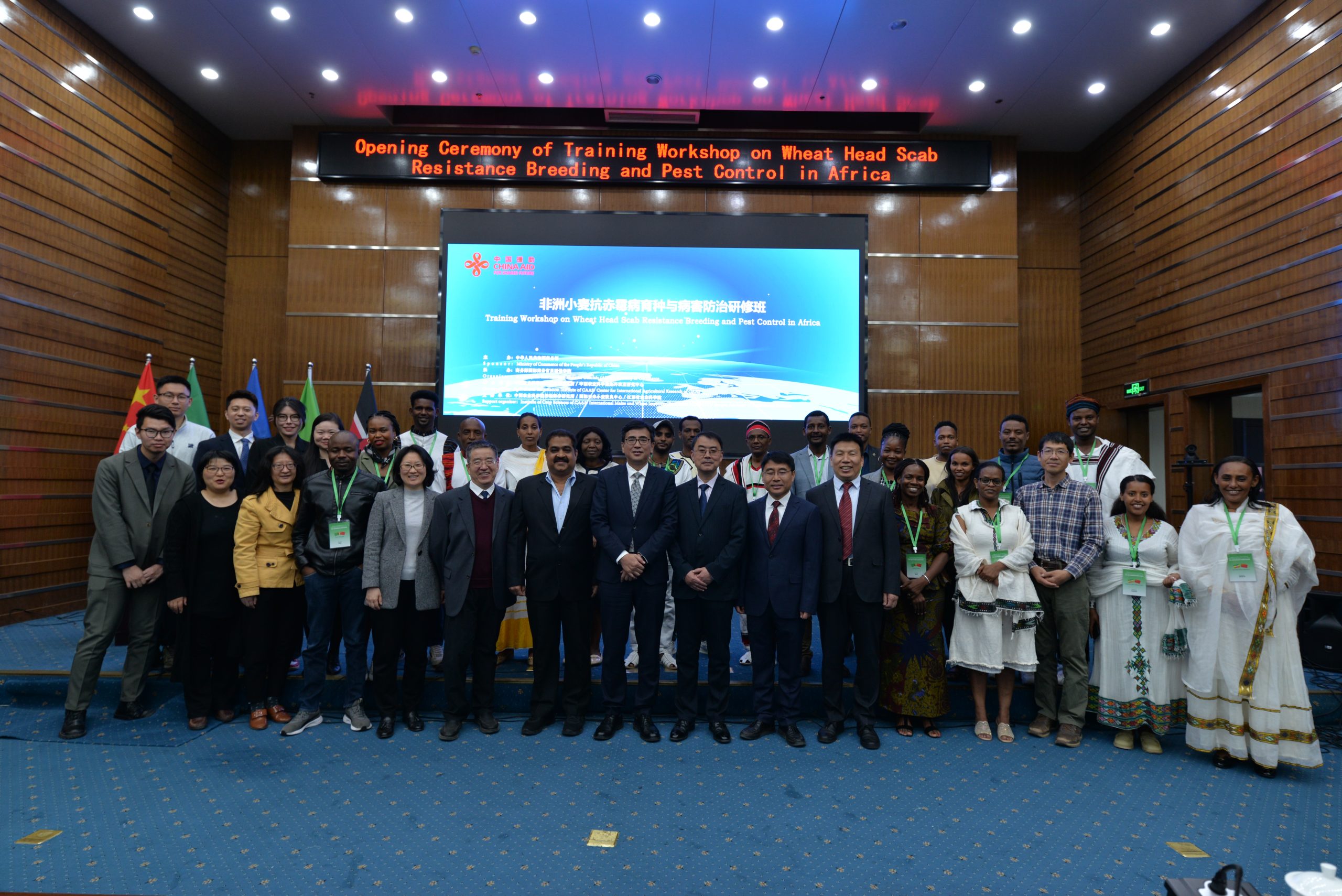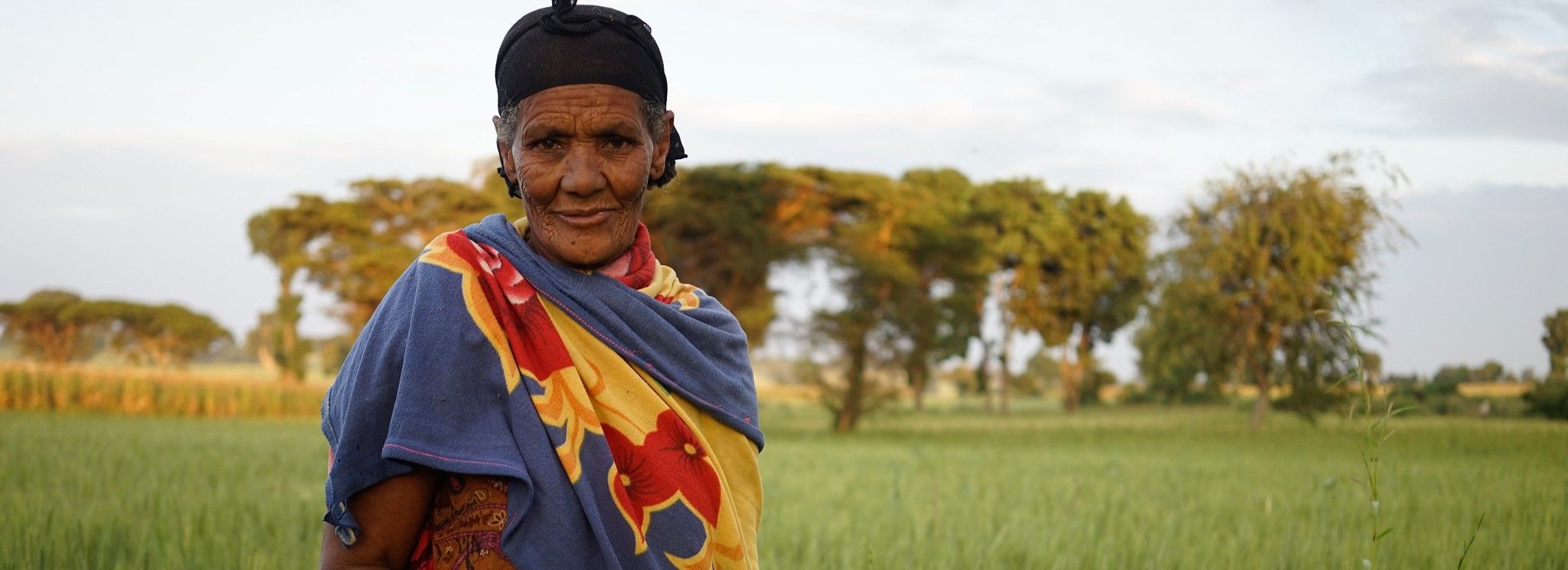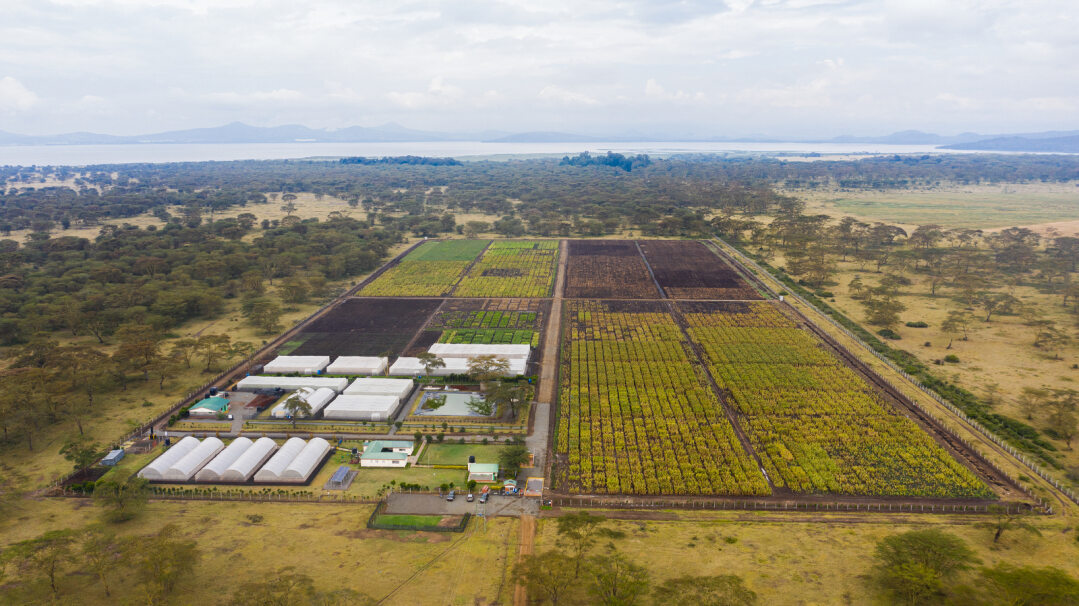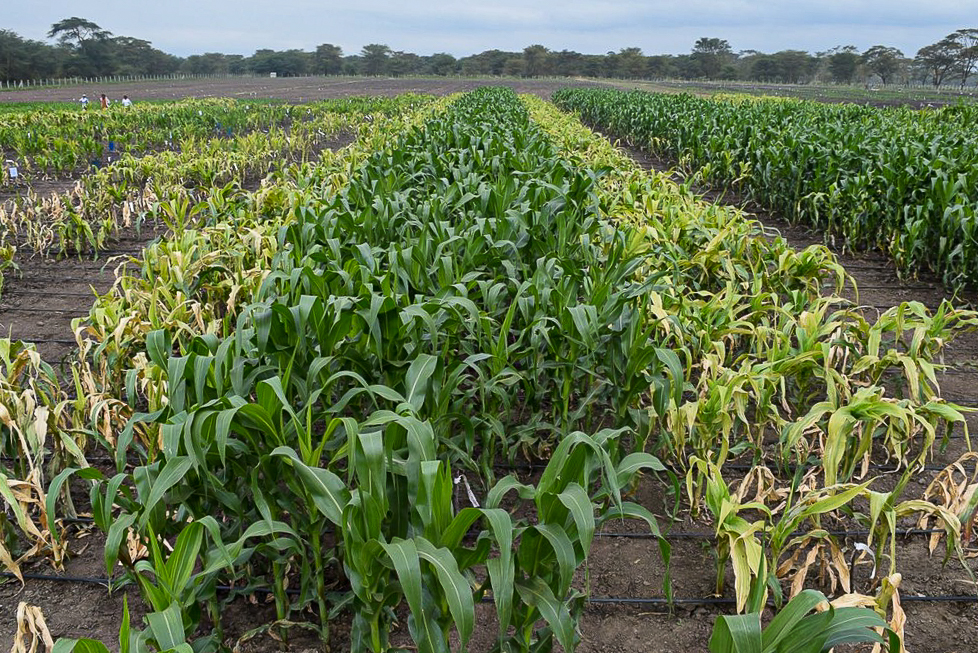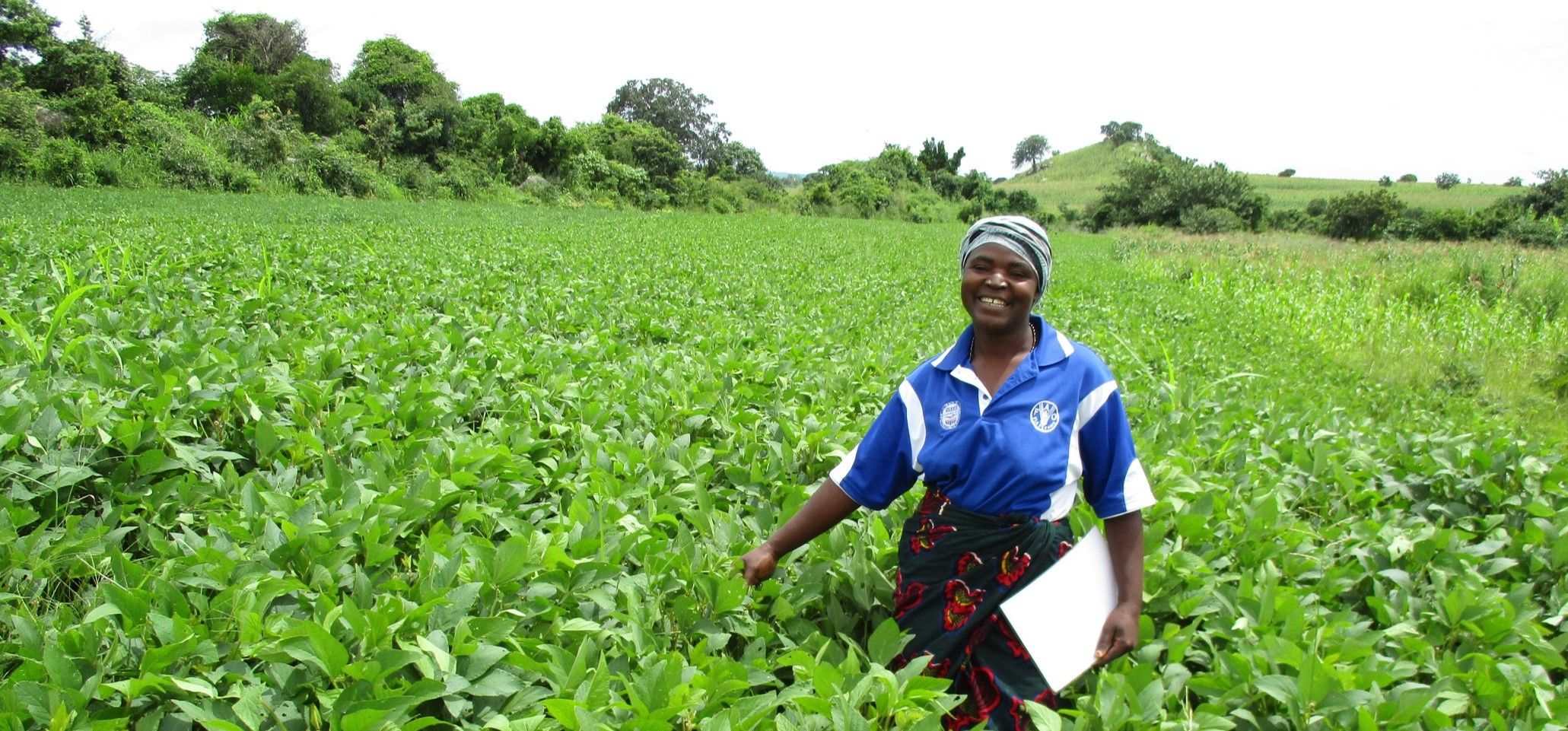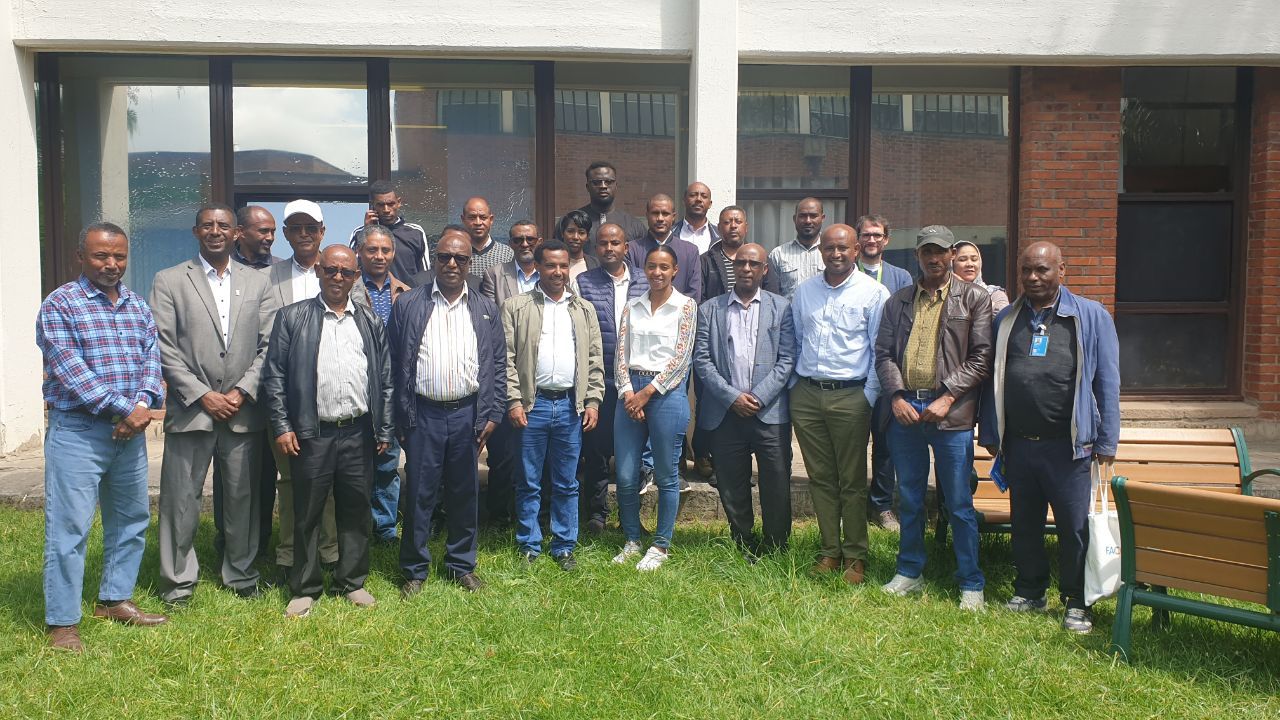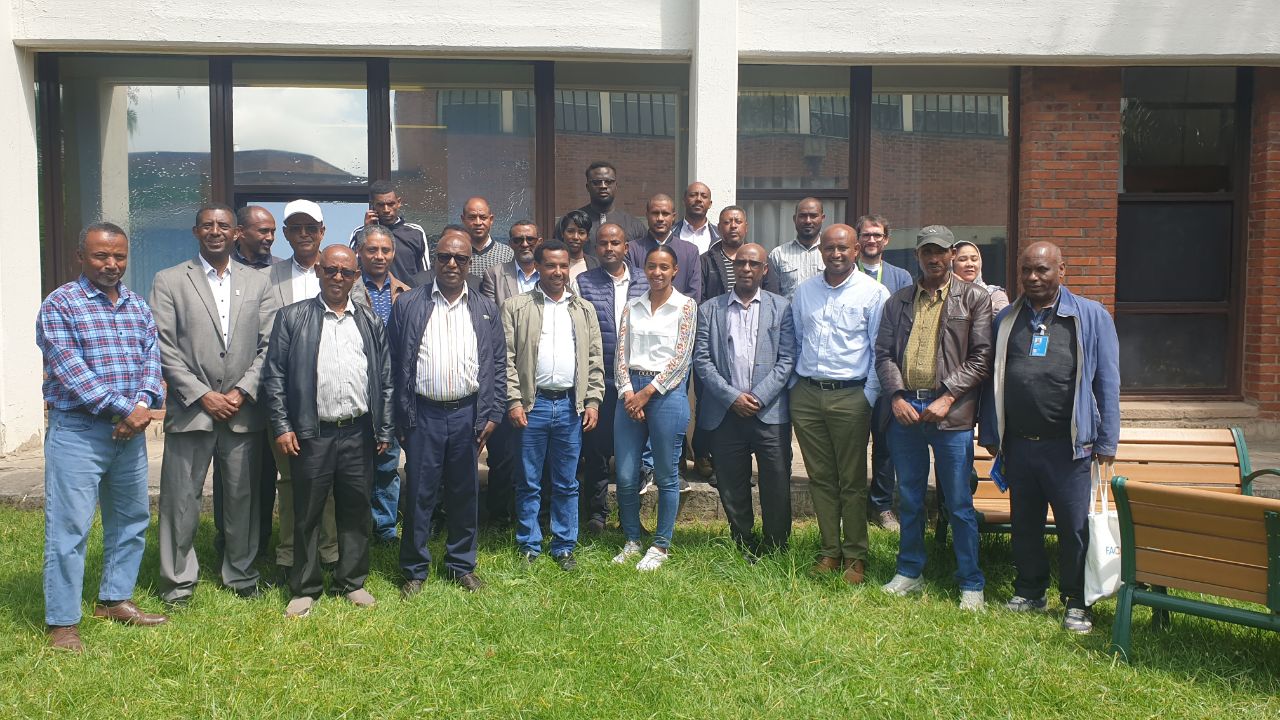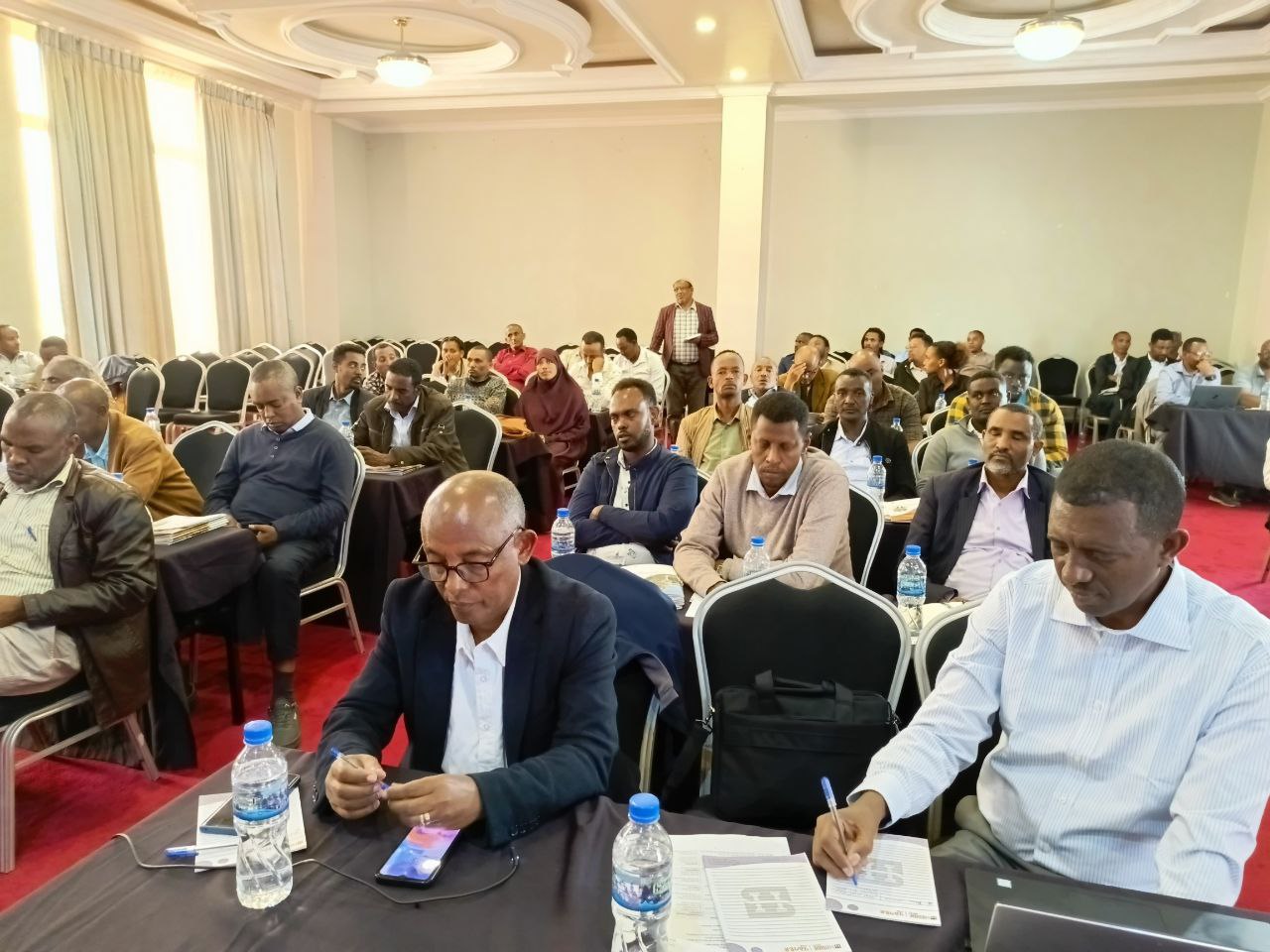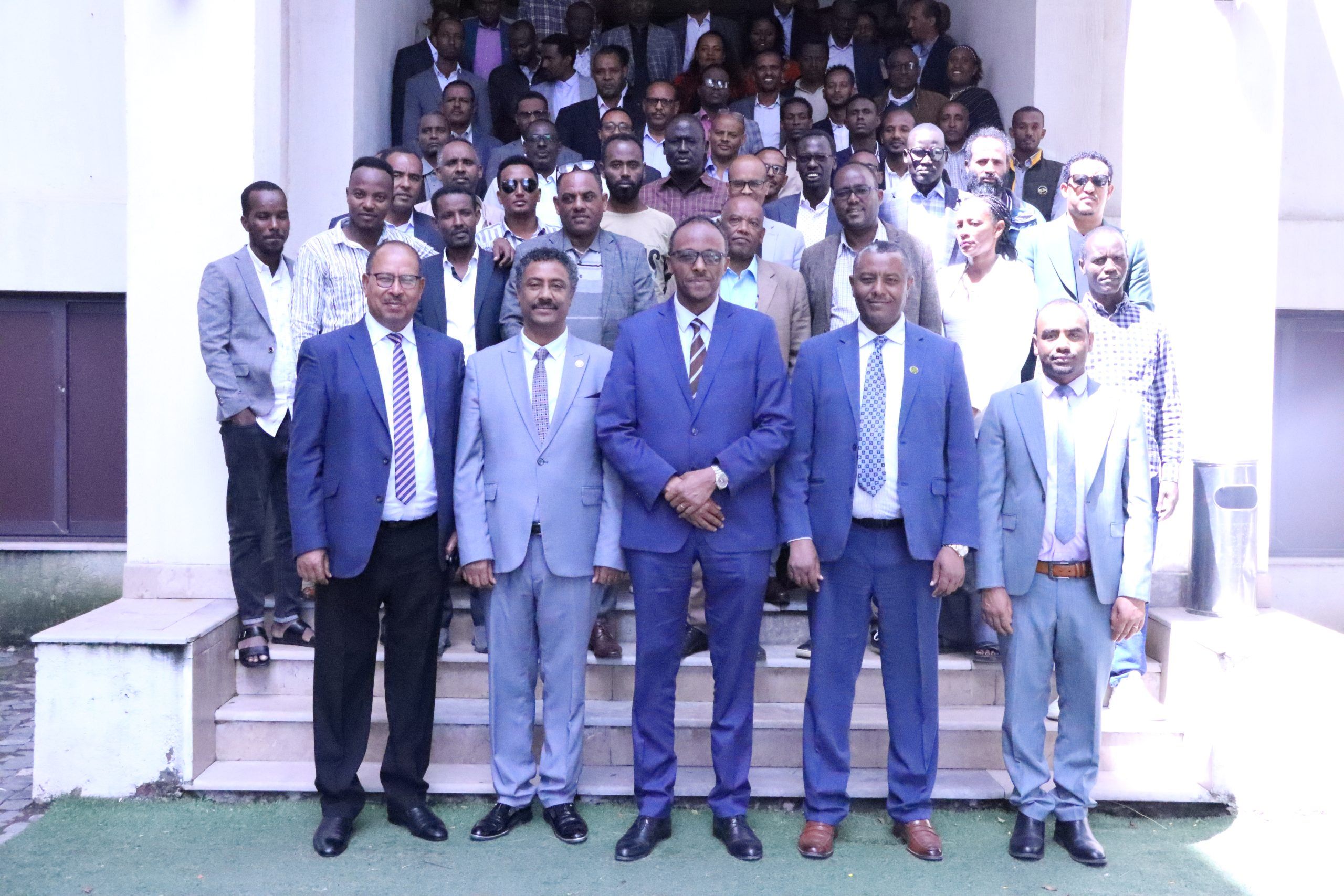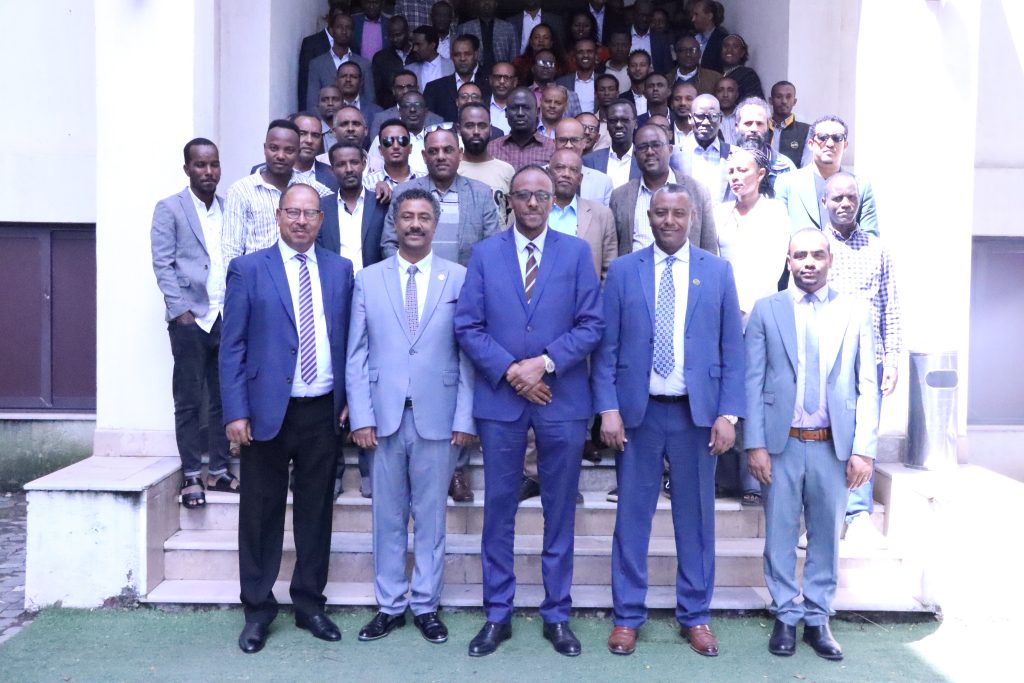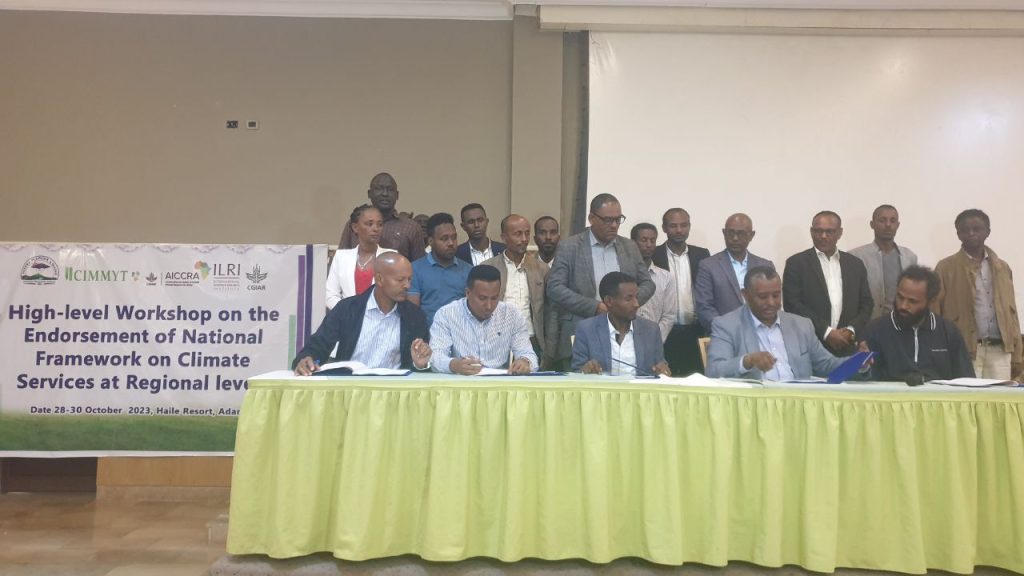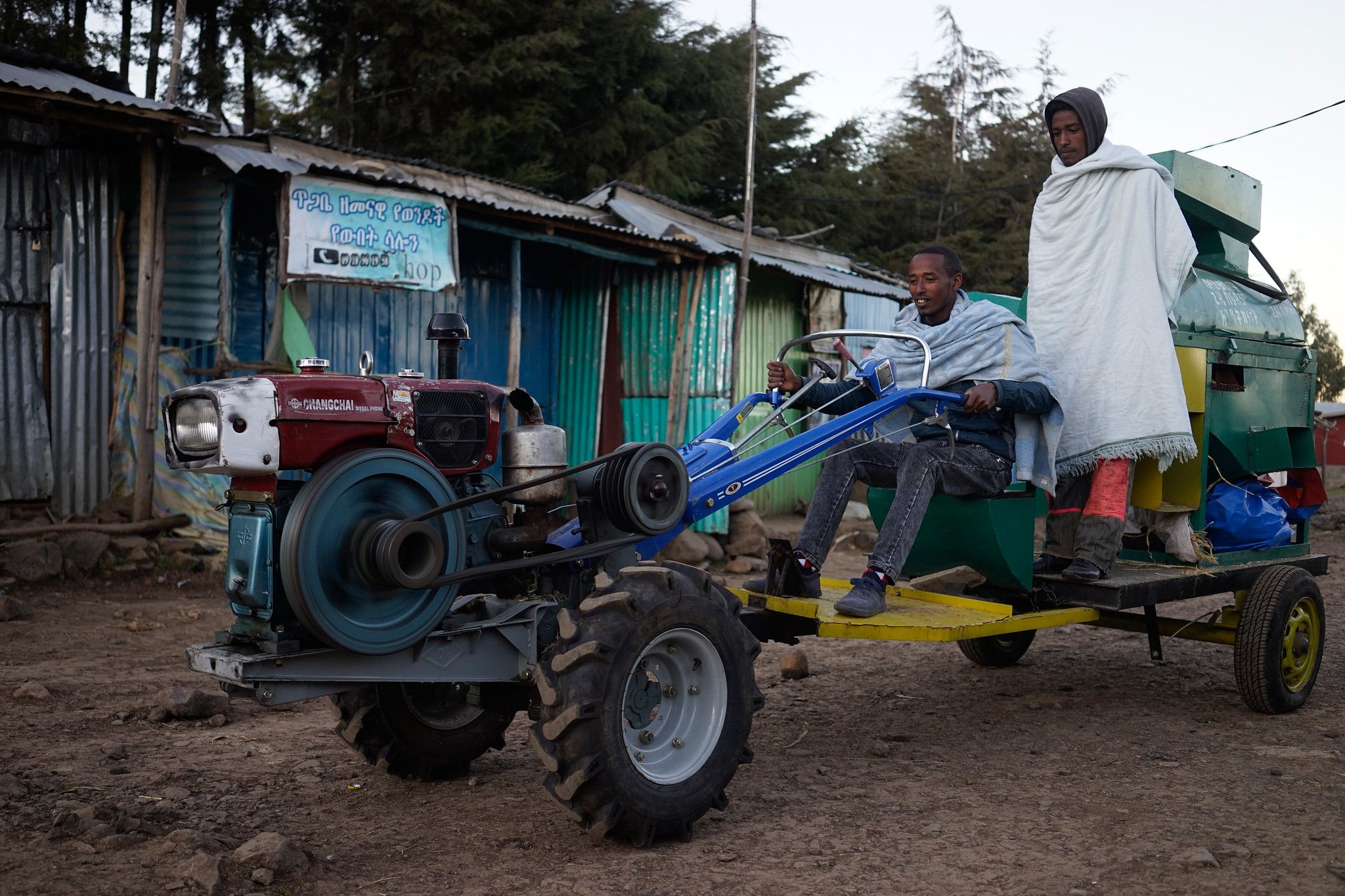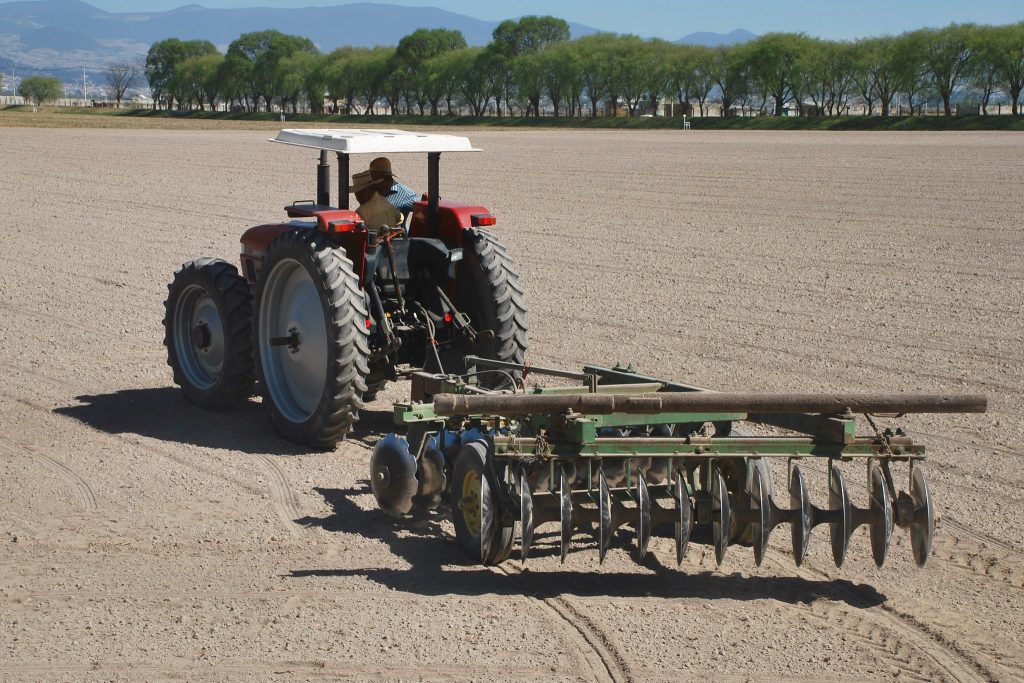CIMMYT drives wheat production systems and enhances livelihoods in Ethiopia’s Lowlands through the ADAPT-Wheat Project
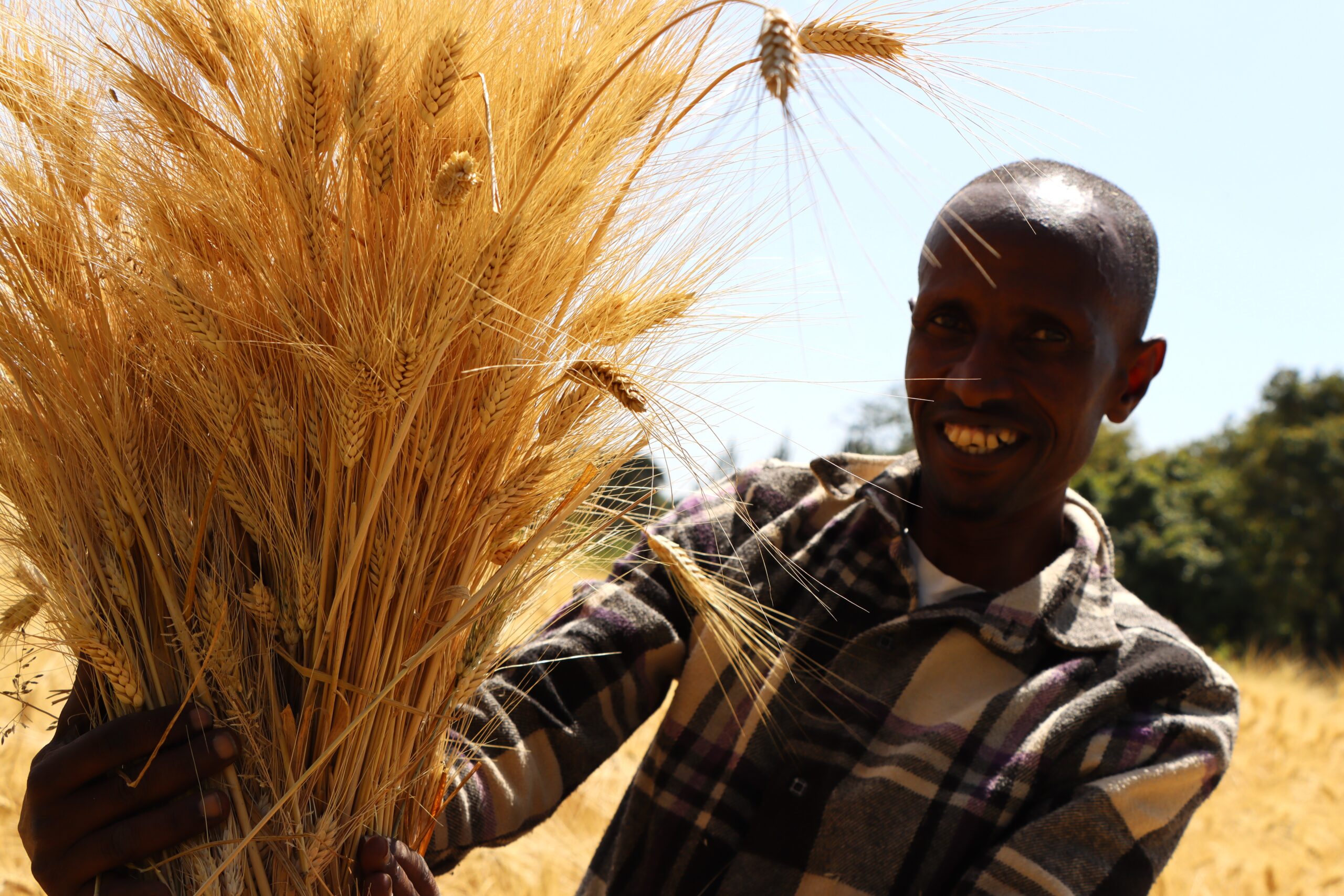
Wheat plays a pivotal role in Ethiopia’s agricultural landscape. As the country’s second most important staple crop, it is crucial to national food security. Traditionally, wheat cultivation has been concentrated in Ethiopia’s highlands, but this has changed with the introduction of the ADAPT-Wheat project—an initiative designed to address the production challenges faced by Ethiopia’s irrigated lowland areas. Led by CIMMYT in partnership with the Ethiopian Institute of Agricultural Research (EIAR), the project aims to tackle key issues such as the lack of stress-tolerant wheat varieties and limited access to reliable seed sources.
Transforming wheat farming in Ethiopia’s lowlands
The Adaptation, Demonstration, and Piloting of Wheat Technologies for Irrigated Lowlands of Ethiopia (ADAPT-Wheat) project focuses on bridging critical wheat production gaps and introducing innovative solutions for smallholder farmers, particularly in the Afar and Oromia regions. By improving wheat production through new varieties and modern technologies, the project is not only increasing agricultural productivity but also transforming farmers’ livelihoods. The initiative aims to directly benefit 1,000 households, with a much wider impact expected across the two regions.
Financially supported by BMZ, the project aligns with Ethiopia’s broader goal of achieving food self-sufficiency. Researchers and national partners have witnessed a significant shift in wheat production practices, demonstrating the success of innovative agricultural technologies and improved collaboration among stakeholders.
Insights from researchers and partners
Bekele Abeyo, CIMMYT-Ethiopia Country Representative and project leader:
“The ADAPT-Wheat project marks a major milestone in Ethiopia’s wheat production journey. It introduces viable wheat technologies that are well-suited for the irrigated lowlands, enhancing both production and productivity in the pursuit of food and nutritional security.”
Tolossa Debele, senior researcher and EIAR–DG representative:
“For years, CIMMYT has been instrumental in advancing Ethiopia’s wheat production system by introducing germplasm, improving varieties, and offering financial, equipment & technical support and training for both researchers and farmers. With the ADAPT-Wheat project, we’ve seen another tangible difference in the livelihoods of smallholder farmers, particularly in the Afar and Oromia regions. The project’s support, including the introduction of modern farm machinery, has not only enhanced mechanization at the farm level but has also contributed significantly to the broader objectives of national agricultural development.”
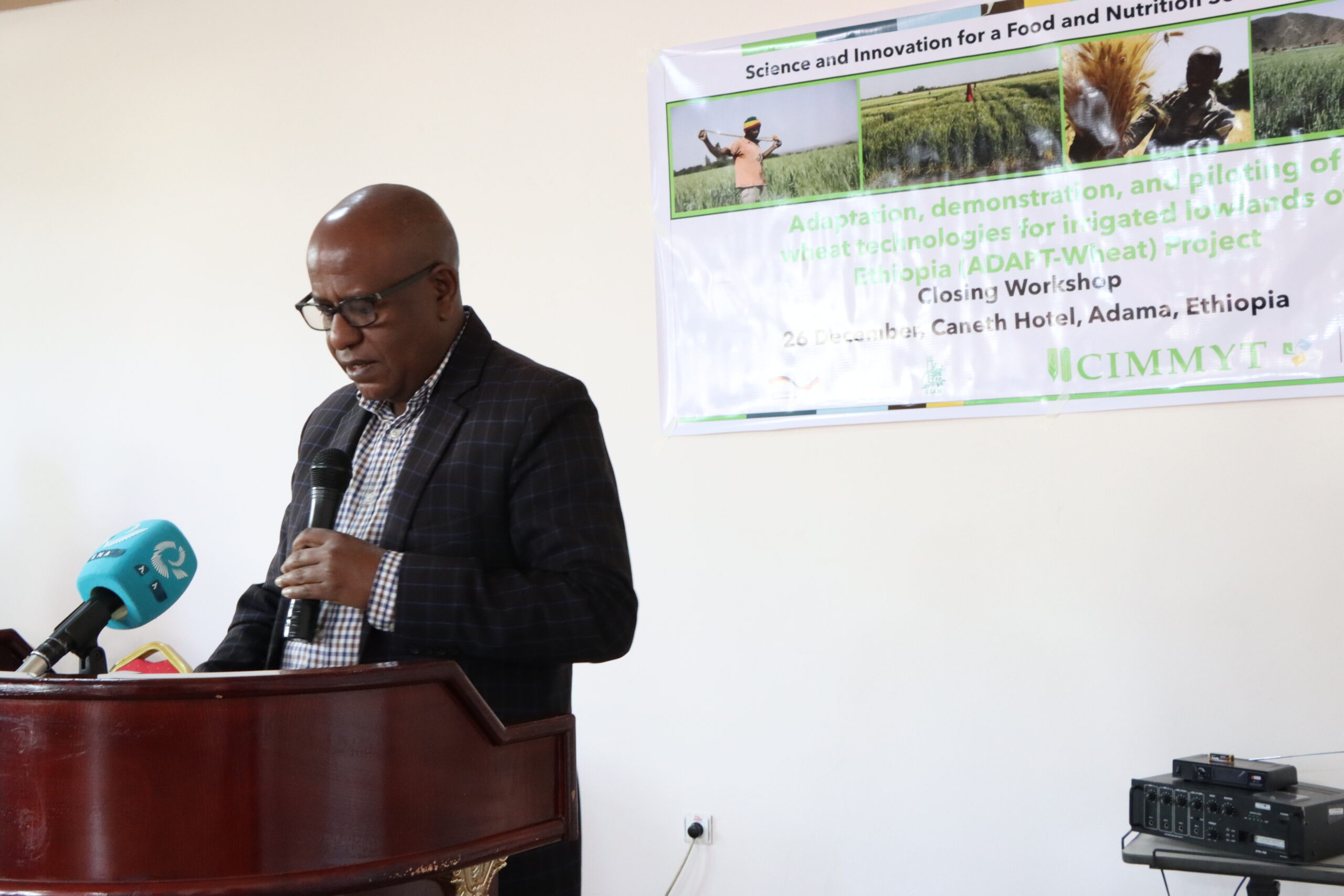
Major milestones and achievements
1. Building capacity for sustainable change
One of the project’s most significant accomplishments has been its strong emphasis on capacity building—both human and physical—to empower local communities in wheat farming. Key capacity-building initiatives include:
- Training for researchers: Software and scientific writing training to enhance technical skills and scientific contributions.
- Training of trainers (TOT) for agricultural experts: Development agents and district-level subject matter specialists were trained to share knowledge with farmers.
The project also included seed distribution, experience-sharing visits, and field days to disseminate knowledge and encourage peer learning. A notable outcome has been informal seed exchange among farmers, amplifying the project’s impact.
Through these efforts, the project successfully reached approximately 4,300 households and engaged a wide range of stakeholders, contributing to human capacity development, seed production and distribution, technology diffusion, and sustainable farming practices.
Additionally, infrastructure development—such as the construction of a quarantine facility and installation of air conditioning units at the Werer Research Center—has strengthened research capacity and maintained high standards for agricultural innovation. The procurement of essential farm machinery has also set the stage for more sustainable wheat farming in Ethiopia’s lowlands.
2. Introducing elite wheat lines
The project introduced 505 elite bread wheat lines and 235 durum wheat lines. From these, 111 bread wheat and 49 durum wheat genotypes were identified for their promising traits, including heat stress tolerance, early maturity, and superior yield components. These lines were rigorously tested across diverse agroecological zones to ensure adaptability.
3. Demonstrating modern irrigation technology and mechanization
The project didn’t stop at improving wheat varieties—it also introduced modern mechanization practices to enhance efficiency and yield. In the Afar and Oromia regions, pilot farms demonstrated advanced machinery such as:
- Subsoilers
- Bailers
- Land levelers
- Planters
- Ridge makers
- Multi-crop threshers
These technologies have been showcased at various farm sites to facilitate adaptation and scaling.
4. Releasing and adapting wheat varieties
The project identified eight wheat varieties (four bread wheat and four durum wheat) suited for Ethiopia’s lowland irrigated conditions.
Additionally, two new wheat varieties—one bread wheat and one durum wheat—were officially registered and released for large-scale production. These releases mark a significant milestone in Ethiopia’s efforts to strengthen wheat production systems.
5. Seed production and distribution
Ensuring the availability of high-quality seeds has been another key priority. Through partnerships with research centers, early-generation seeds were provided to private seed producers and farmers’ cooperative unions. Field monitoring ensured seed quality at harvest, resulting in the production of 430 quintals of certified seed.
Women and youth empowerment strategy
The ADAPT-Wheat project has made a deliberate effort to empower women and youth by ensuring they have access to high-quality seeds, training, and technical support. Notably, women comprised 32% of seed distribution beneficiaries, strengthening their role in improving food security and livelihoods.
Voices from the field: Farmers share their stories
Damma Yami from Jeju district, Alaga Dore village
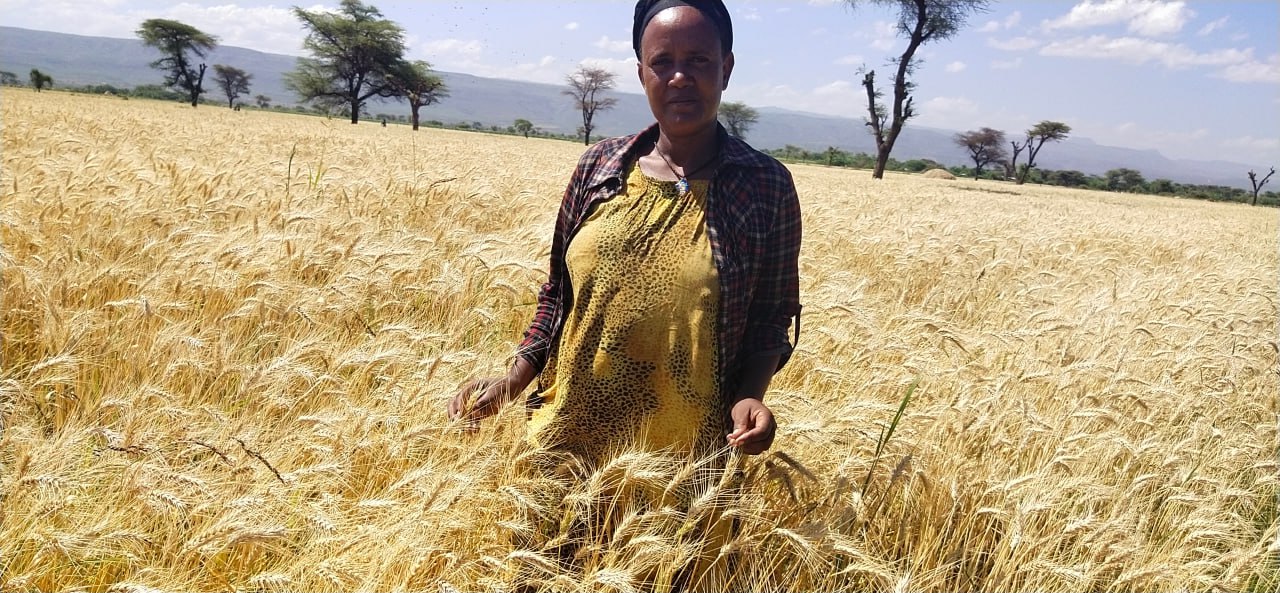
Damma Yami’s story is a powerful example of how innovative agricultural initiatives can transform communities, especially in regions facing harsh environmental conditions.
“For many years, we have lived in arid conditions where livestock farming was our primary livelihood. However, with the challenges posed by weather trends, our traditional systems were no longer sufficient to maintain our livelihoods. The introduction of the ADAPT-Wheat project in recent years has reversed this trend. The project brought us wheat cultivation, as a new and golden opportunity for the farming community. We received high-yielding seeds, training, and technical support on farming practices, and soon we began to see impressive results. The benefits of the project are clear: it provides food for our families, generates income to send children to school, and helps meet other basic needs. As a farmer who engaged in this project, I can confidently say that the project has reshaped our future livelihood.”
Yeshiwas Worku from Oromia region, Arsi Zone, Merti district, Woticha Dole village
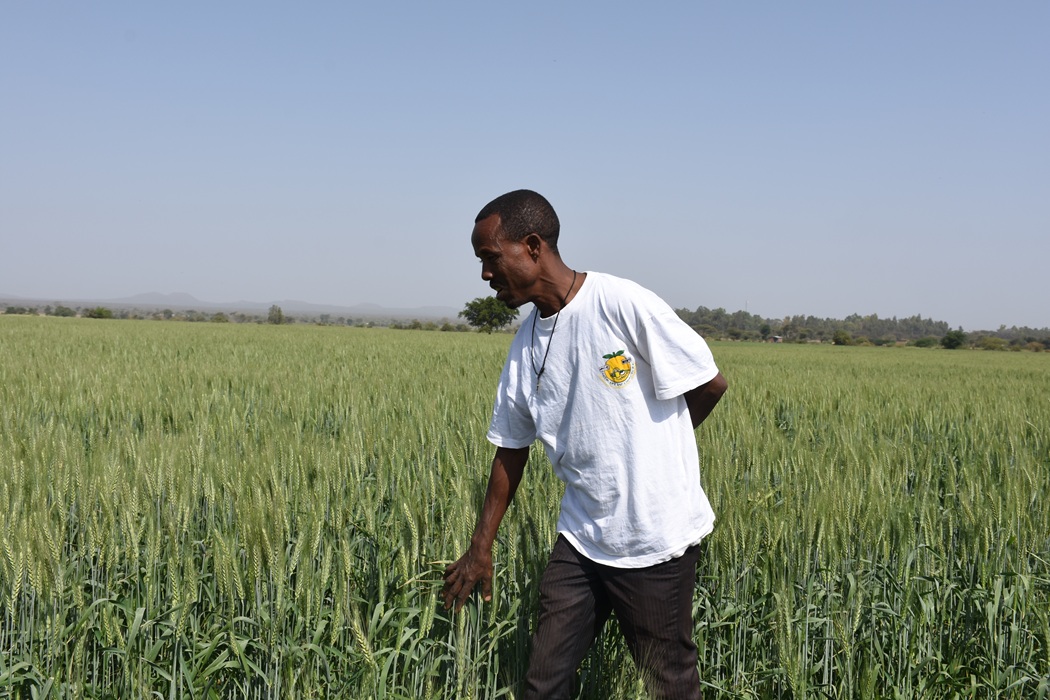
Yeshiwas Worku, a 40-year-old farmer was among those who benefited from the project.
Yeshiwas explains that before the project, wheat cultivation was not traditionally practiced in his area, but it has now become a game-changer for the community. The introduction of modern farming tools, machinery, and access to improved crop varieties has been key to their success. With the help of the project, wheat production has not only become their main source of income but has also helped farmers gain confidence in their ability to sustain their livelihoods.
“We are now familiar with modern farming tools, machines, and practices thanks to the implementing partners of the ADAPT project. We also have access to improved crop varieties, which are crucial for better production and increased income. Now, wheat production has become the main source of our livelihood. This alternative farming opportunity has not only boosted our confidence but has also allowed us to secure a more sustainable livelihood for my family and me. I am deeply grateful to the project implementing partners for playing such a crucial role in transforming our lives. The impact has truly been transformative.”
A transformative impact on wheat production
The ADAPT-Wheat project, alongside CIMMYT’s ongoing work in Ethiopia, has significantly improved wheat production systems and enhanced the livelihoods of smallholder farmers in the lowland regions. More than just a This project is technological intervention, the project serves as a lifeline for smallholder farmers. By introducing innovative wheat technologies, improving seed availability, and empowering local communities, it directly contributes to Ethiopia’s food security goals while fostering economic growth and resilience in rural areas.
As Ethiopia continues its journey toward agricultural self-sufficiency, the success of the ADAPT-Wheat project serves as a model for sustainable agricultural development.
